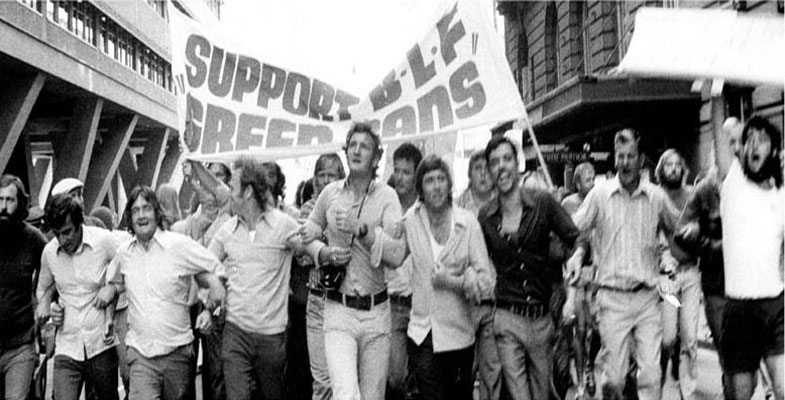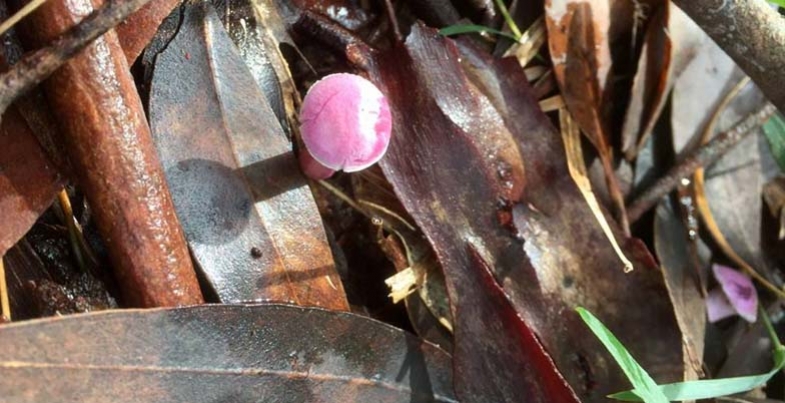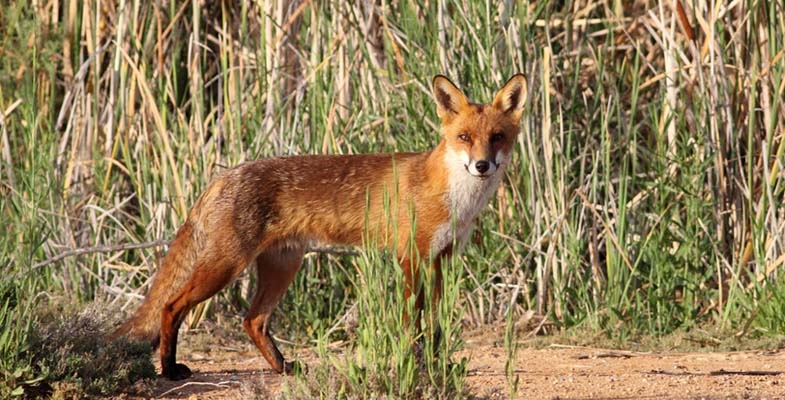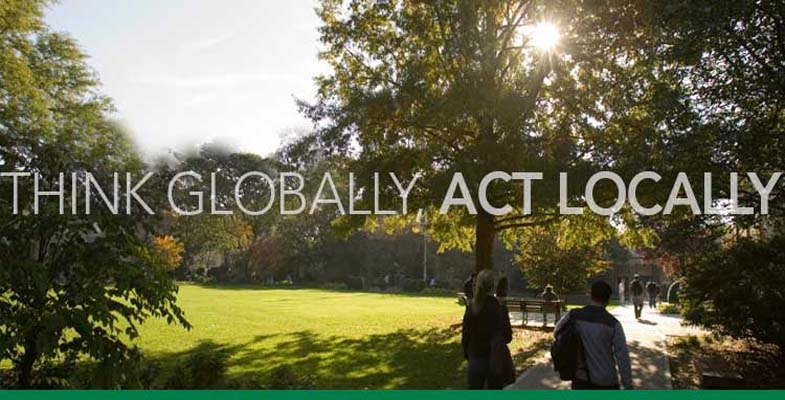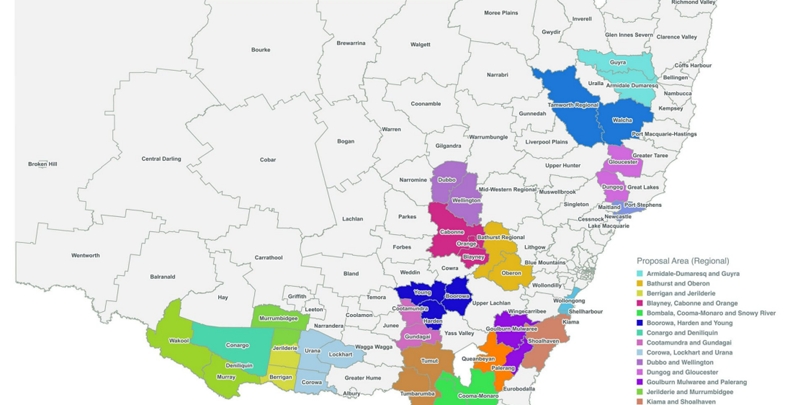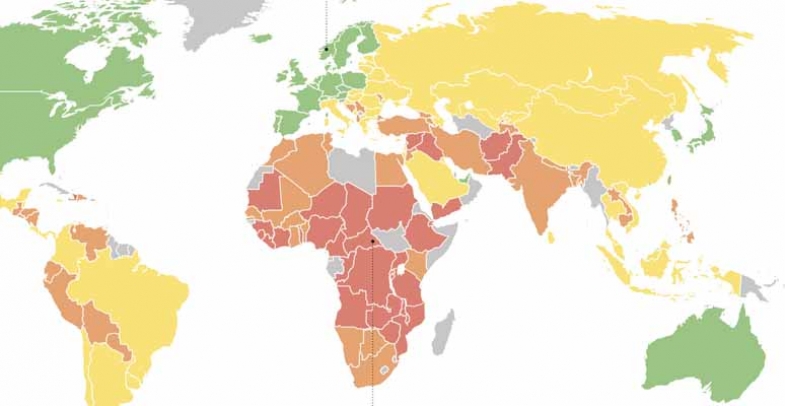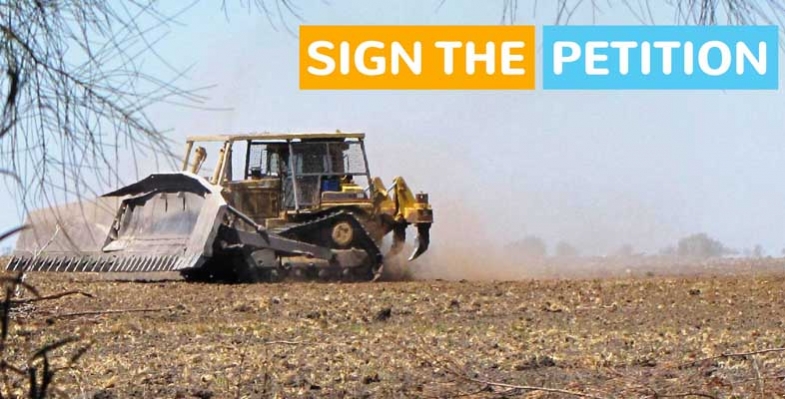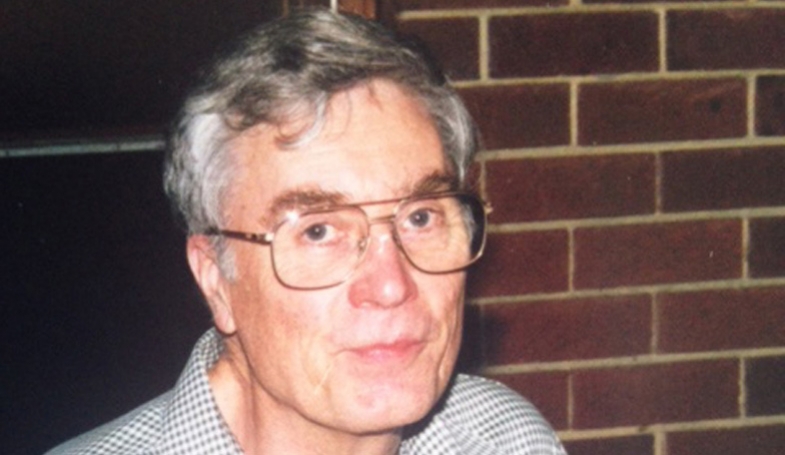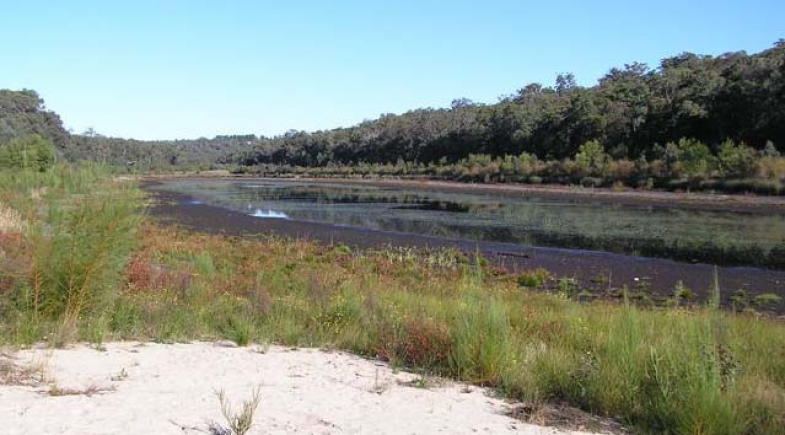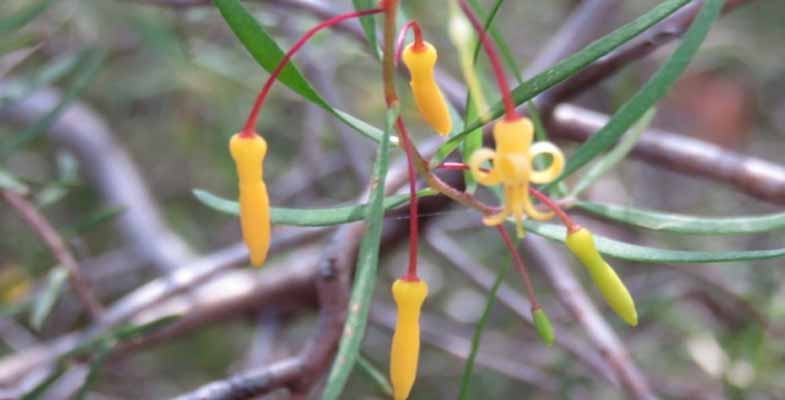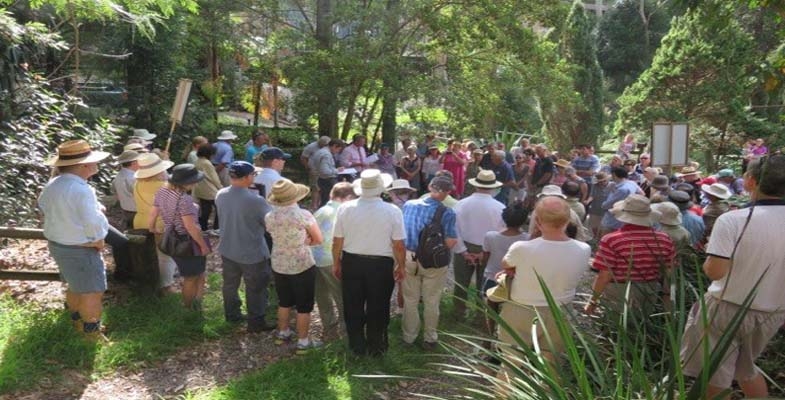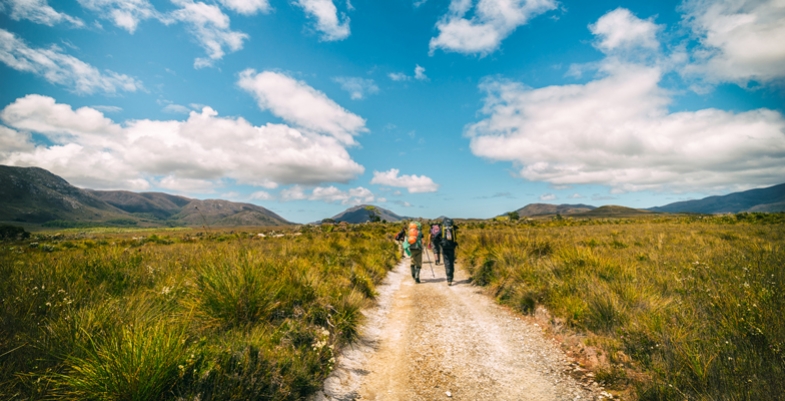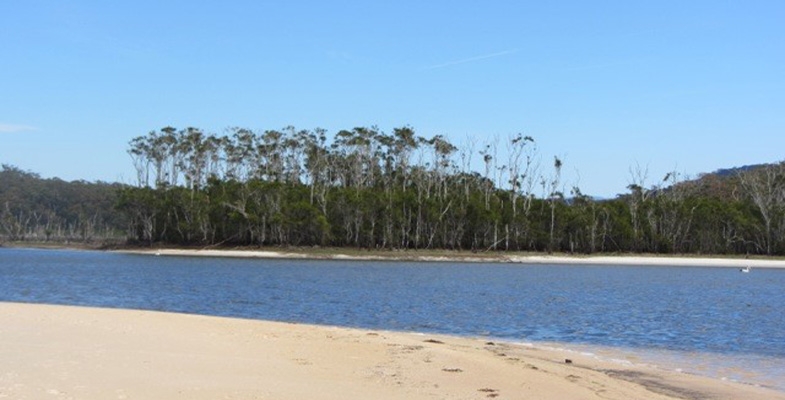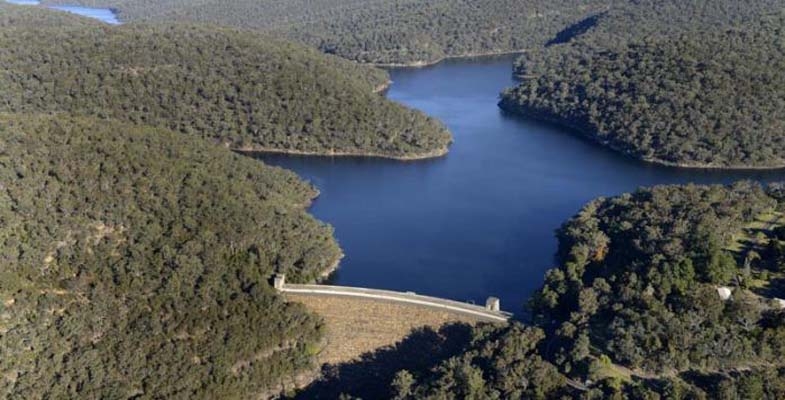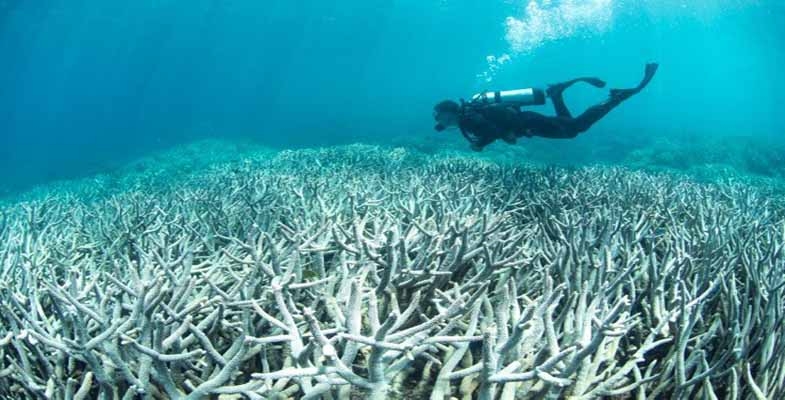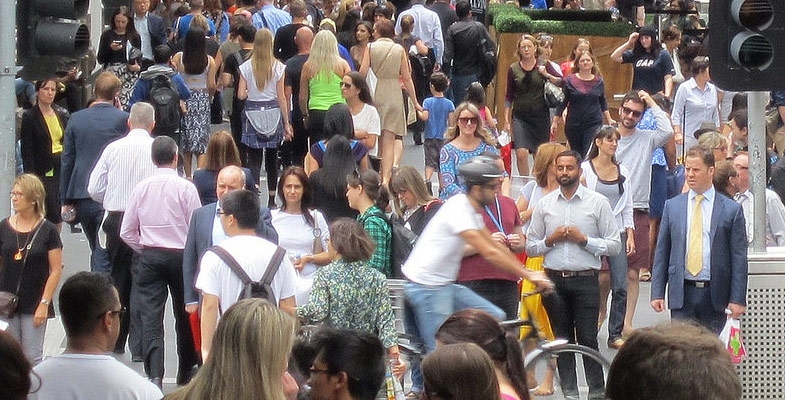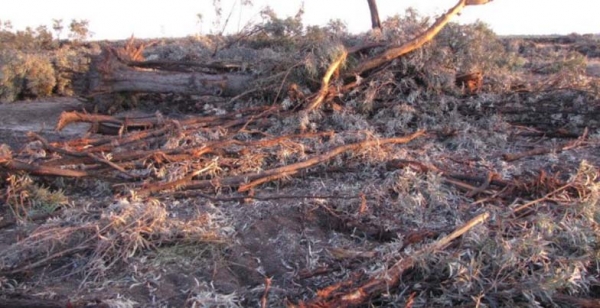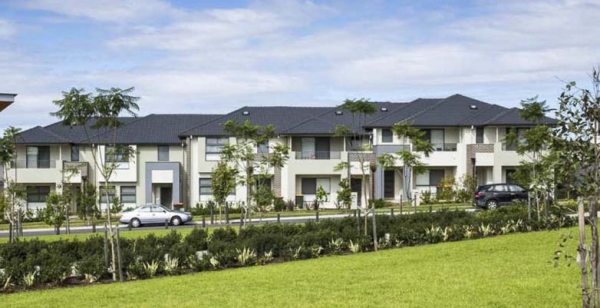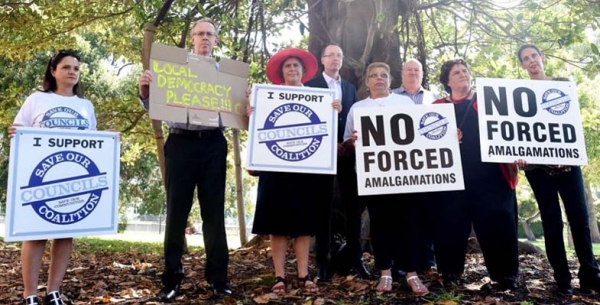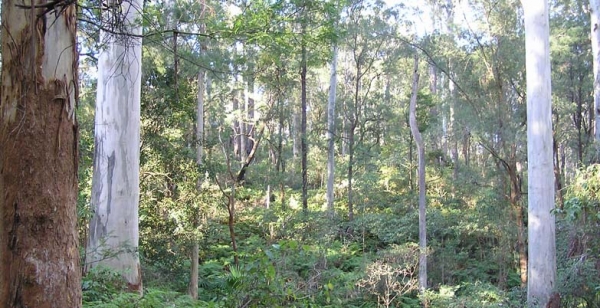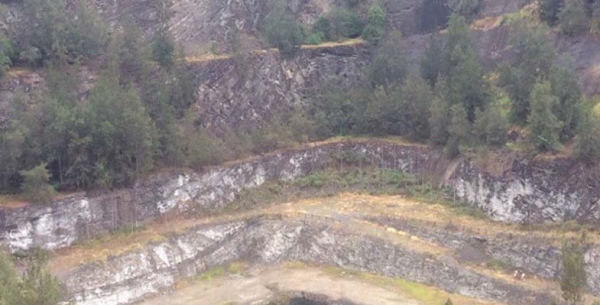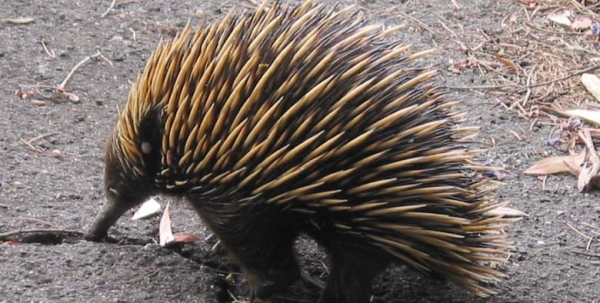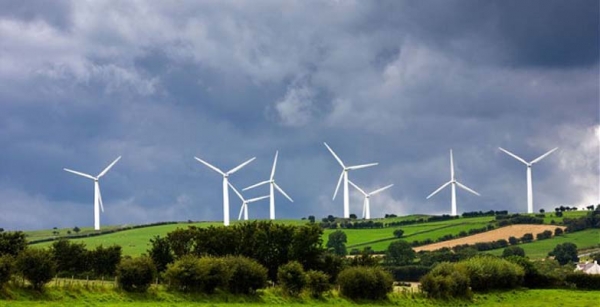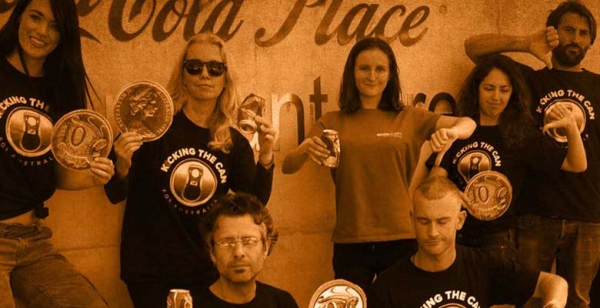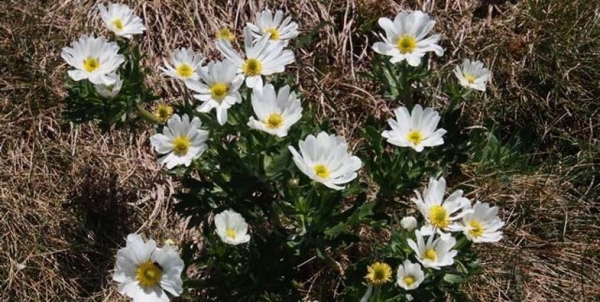Newsletter blog
Children categories
The House that Jack Built
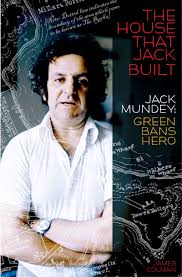 Back in the 1970s, a speck of harbourside bushland in Hunters Hill achieved unexpected fame as the site of the world’s first Green Ban when militant union leader Jack Mundey joined forces with local residents in what became known as the Battle for Kelly’s Bush.
Back in the 1970s, a speck of harbourside bushland in Hunters Hill achieved unexpected fame as the site of the world’s first Green Ban when militant union leader Jack Mundey joined forces with local residents in what became known as the Battle for Kelly’s Bush.
Gordon Library is hosting an evening with James Colman, the author of a new book on the life of Jack Mundey.
Date: Tuesday 27 September
Venue: Gordon Library Meeting Room 1
Time: 6 to 7 pm
Cost: $5, wine and cheese will be served
Book: https://bookings.kmc.nsw.gov.au/coursesAndeventsTel: 9424 0120
After Kelly’s Bush, Mundey and his Builders Labourers’ Federation went on to save The Rocks and dozens of other well-known Sydney sites from the bulldozers. Across Australia, the green ban era saw many battles between residents, developers and officialdom – reaching a peak in the mid-70s. By this time its message had spread far and wide, and Mundey himself had become an international identity in the urban conservation movement.
The House that Jack Built is the first serious book on the man himself. Lane Cove author, architect and planner, Jim Colman, describes for the first time how Mundey moved from his early days as a young builder’s labourer from north Queensland to a leadership role in the Australian heritage movement.
And when the fervour of the green ban era had subsided, Mundey did not hang up his boots. He served a term as an alderman on the Sydney City Council and sat on the council of the Australian Conservation Foundation for a record term. Later he chaired the NSW Historic Houses Trust and in 1998 was named a national living treasure by the NSW National Trust. Amongst his many accolades are two honorary doctorates and an honorary master’s degree in environmental studies.
Colman’s book is a very readable, thoroughly researched and lavishly illustrated coverage of Mundey’s key achievements and activities in the planning and conservation fields during a busy half century. It reveals how this erstwhile communist and trade union leader became a dedicated conservationist who achieved fame – and notoriety – for exploits which were praised by the many, denounced by the few. And despite its evidence that we have made some solid progress in heritage conservation during the Mundey era, it concludes with a warning from the man himself:
The greatest single threat to the environment, locally as well as globally, is the rapacious greed of big multi-national corporations.
Rare Fungi
John Martyn discovered this beautiful pink fungus in Sheldon Forest.
Fungi expert Ray Kearney identified it as Cantharellus lilacinus. A wet weather rarity.
Hunting in National Parks
STEP was actively involved in the fight against the O’Farrell government’s legislation introduced in 2012 allowing amateur hunting in national parks, euphemistically called the Supplementary Pest Control Program.
Fortunately a strong public campaign of opposition and a damning report on the activity of the Game Council, the body slated to manage the hunting process, led to a complete rethink of the legislation (see STEP Matters Issue 172, p 5). Instead the government decided to trial over three years, a closely supervised volunteer ground shooting program in 12 national parks and state reserves, mostly in western NSW.
The evaluation of the program will ultimately assist the government in deciding whether, and if so, how, to proceed with supplementary pest control beyond the three year trial period.
In April 2016 the Natural Resources Commission reported in a media release on an interim review of the trial. It stated that the Supplementary Pest Control trial in national parks is building significant positive relationships among volunteers, neighbours, Aboriginal groups, and National Parks and Wildlife Service staff.
The media release stated that:
Both National Parks and Wildlife Service staff and the selected volunteers from the Sporting Shooters Association of Australia, NSW are working together very professionally, safely and with due regard to animal welfare …
An ongoing priority of the pest control trial will be to identify the specific set of circumstances where ground shooting using volunteers can be most useful to National Parks and Wildlife Service primary pest management program …
Overall the Commission found that the trial is being implemented in-line with relevant legislation and ministerial requirements, is meeting human safety and animal welfare requirements and that the efficiency and effectiveness of operations has improved.
In response to the Commission’s recommendations the NSW government has commenced night operations and committed to continuing to improve efficiency and effectiveness of the trial.
Common sense has prevailed. If only political expediency had not taken over when the first decision was made in 2012 to bend to the dangerous proposal by the Shooters and Fishers Party to allow amateur hunters into the majority of national parks.
Call for Nomination of Office Bearers and Committee Members
STEP welcomes new members of the committee and other members who would like to contribute to our work in some way. This work could involve publicity of events, updating our website, writing or researching submissions or whatever you can suggest.
Committee meetings are usually held on the first Wednesday of each month except January.
Our AGM is on 11 October 2016. Nominations for office bearers and committee members should be made in writing and received at least seven days before our AGM.
If you are interested in helping out, please send us an email and we will phone you back. Nomination forms are also available from This email address is being protected from spambots. You need JavaScript enabled to view it..
Are the Local Council Fit for the Future Reforms going too Far?
The NSW Government has been reforming the legislation governing the operation of local government under the catchy title of Fit for the Future reforms. The process started in late-2011 with the appointment of an independent local government review panel and a legislation taskforce. This process covers a lot more than the amalgamation issue.
One of the current stages (phase 1) of the reform program focuses mainly on changes to the governance and strategic business planning processes of councils. Later phases will focus on how councils raise revenue and how they exercise their regulatory functions, as well as a program of restructuring and updating the local government legislation.
A quick Google search reveals significant concerns about the current phase of the process. The Law Society and the Office of Local Government are two bodies that have expressed concern in their submissions that insufficient information is available about proposed legislation changes for a meaningful consultation to take place. The timeframes are also unrealistic. As has occurred with the amalgamation process the objective seems to be to rush through the changes so they can be implemented by about September 2016.
Many of the proposals go beyond STEP’s ambit of interest but the Ryde Hunters Hill Flora and Fauna Preservation Society has made a detailed submission that calls into question the intent of the whole process:
The Society considers that the proposed changes represent a more radical re-write of the role and purpose of local government in NSW than that of the amalgamation process. It would seem that the amalgamation debate process has exhausted and diverted local communities and their elected councillors from the legislative review.
It has distracted attention from these proposed legislative changes which will have a profound impact on the integrity of local government as a tier of government as most NSW residents understand it. In its overall intent phase 1 proposed changes could be interpreted as a cynical attempt by the State government to remove the autonomy of local government in decision-making and centralise power at a state level of government.
State of Environment Reporting
Under the current Local Government Act councils are required to include a State of the Environment Report in their annual report every four years. One particular issue raised by the Ryde Hunters Hill Flora and Fauna Preservation Society about the recent explanatory paper is the proposal to remove this requirement. Instead councils would be required to report on environmental issues relevant to the objectives established by the ‘community strategic plan’. At this stage it is not certain that there will be any provisions for the community strategic plan objectives to include environmental issues so a council would not need to budget to fund and report on environmental measures.
According to the explanatory paper this amendment is designed:
to reduce the compliance burden on councils arising from the preparation of a separate state of the environment report every four years.
It is unclear whether the reporting in the community strategic plan will relate to the council operations only and not measure aspects relating to all the residents of the council area. It is more appropriate to cover this sort of detail in a later stage of the review process.
This proposal has received very little publicity so it slipped through our radar.
State of the Environment (SoE) reporting is an essential requirement for understanding the incremental changes that are happening to our environment as the population juggernaut continues to invade Sydney. SoE reports provide a consistent and efficient framework for on-going environmental monitoring and reporting and necessitate timely appraisal of how councils are meeting vital goals. They provide a mechanism to feed into regional environmental planning processes. The information gathered can be integrated into council’s operational and strategic planning processes. This ensures that councils meet their responsibilities as natural resource managers.
NSROC SOE Report 2011–12
An example of the regional reporting is the Northern Sydney Regional Organisation of Councils (NSROC) combined report that provides a comprehensive snapshot. As the report states:
The Regional SoE Report allows NSROC communities … to have a broader understanding of water, air, biodiversity, waste, noise, heritage and planning issues and serves to enhance coordination between councils.
Here is a summary of some data from the 2011–12 report, the most recent available.
| Council | Hornsby | Ku-ring-gai | Ryde | Willoughby | North Sydney | Total |
| Approx population (thousands) | 164 | 114 | 106 | 71 | 65 | 567 |
| Residential energy (MWh/capita) | 2.8 | 3.61 | 2.58 | 2.75 | 2.92 | 2.99 |
| Water (kL per capita) | 80 | 88 | 98 | 114 | 107 | 98 |
| Waste to landfill (kg/capita) | 210 | 197 | 227 | 180 | 123 | 170 |
| Waste recycled (kg/capita) | 118 | 303 | 204 | 272 | 151 | 229 |
Bushcare volunteer hours have reduced from the previous year by 10% to 41,782. If these hours are valued at $25 per hour this equated to over $1million of free labour.
Residential energy consumption is going down, probably thanks to the solar panels on lots of roofs. Exported solar power in the region has grown from 219 MWh in 2007–8 to 15,473MWh in 2011–12.
Water consumption is reducing. But waste generation is a different story. The amount going to landfill continues to increase while there is also more being recycled.
There are some surprising variations in performance on a per capita basis between council areas which makes one wonder about the consistency of data definitions and/or collection methods.
Threats to Remove Tax Deductibility from Donations to Environment Groups Could Become a Reality
On 4 May 2016, the Senate Standing Committee on the Environment tabled a report on its inquiry into the Register of Environmental Organisations. Maybe it was hoped that with all the attention being given to the Budget, no one would notice.
The rhetoric from LNP politicians presaged the political agenda behind the inquiry such as the accusations by the Attorney General, George Brandis that environmental organisations (EOs) are destroying jobs. The implications were that the objective of the inquiry is to justify the removal of tax free donation status of environmental charities. The terms of reference for the enquiry related mainly to administrative aspects of the REO but included an examination of:
activities undertaken by organisations currently listed on the Register and the extent to which these activities involve on-ground environmental works
Under the Income Tax Assessment Act 1997 (Cth) an environmental organisation that is given Deductible Gift Recipient (DGR) status is required to have a principal purposeof:
- the protection and enhancement of the natural environment or of a significant aspect of the natural environment;or
- the provision of information or education, or the carrying on of research, about the natural environment or a significant aspect of the naturalenvironment.
Note the or above and yet the terms of reference focused on ‘on-ground’ works.
The inquiry received hundreds of submissions, held hearings and studied the activities of some EOs on the ground. They observed that:
Broadly speaking, the activities of environmental DGRs can be summarised under four categories:
- environmentalremediation
- education andresearch
- policy advocacy and representation
- other activities including those carried outoverseas
The committee acknowledged the significant and ongoing contribution of environmental charities to the protection and enhancement of the natural environmental in all states and territories. However the report stated that:
Having regard to the terms of reference of the inquiry, the committee is of the view that the purpose of granting DGR status to environmental organisations should be to support practical environmental work in the community.
They then have taken a very narrow interpretation of the meaning of ‘practical’. The significant recommendation is that:
… legislative and administrative changes be pursued by the Australian Taxation Office to require that the value of each environmental deductible gift recipient’s annual expenditure on environmental remediation work be no less than 25% of the organisation’s annual expenditure from its publicfund.
The committee accepted that definitional issues may arise from this recommendation. The committee’s view is that remediation work should include revegetation, wildlife rehabilitation, plant and animal pest control, land management and covenanting. Activities such as education, research, advocacy, legal services, activities involved in representing member organisations and activities carried out overseas should not qualify as remediation work.
The government report maintained that the recommended restriction would not impede the ability of EOs to carry our advocacy work.
The Labor Party senators published a dissenting viewpoint. Here are a few quotes from their report:
The overwhelming weight of evidence presented to the committee points to the vital importance of maintaining the tax deductibility of donations to environmental organisations, without imposing further conditions or constraints on the operation of those organisations.
Despite the efforts of government members, no disinterested evidence was adduced in support of the proposition that a distinction should be drawn between so-called ‘on ground’ environmental activities on the one hand, and advocacy, on the other.
In these circumstances, the Labor members of the committee find it extraordinary that government members have recommended to, in effect, constrain the capacity of environmental organisations to engage in advocacy work. We completely reject this undemocratic proposition. Citizens should be supported to question government decision-making and corporate power, not manoeuvred into silence by legislative and administrative action.
The dissenting report also pointed out that the recommendation would create additional red tape for both the environmental organisation and the Taxation Office in collecting information required to check that the organisations are complying with the requirement. Why should EOs be treated differently to other not-for-profit charities?
In STEP’s view it is totally unfair to propose such restrictions on the ability of EOs to raise funds while the corporate sector is free to lobby in their own interests and the expenditure incurred is tax deductible. EOs are acting in the interests of current and future generations to preserve a world that is being destroyed by government and corporate short term interests.
Example – longwall mining under Sydney’s water catchment – more longwalls would probably be approved by now if environment groups had not done such detailed research to highlight the issue. The authorities now recognise now serious the risks are of major loss of water flows and contamination.
STEP’s Environmental Protection Fund does have DGR status so we will need to review our position if and when any changes are made to the legislation.
Is Australia Winning?
Everyone likes a race; whether it’s the Melbourne Cup, some sporting event or an election. Winning is fabulous, losing can be character building.
Prosperity Index
There crossed my desk (iPad) the other day the Prosperity Index produced by the Legatum Institute based in London.
Table 1 gives a listing for 2015 of the top ten countries, the bottom ten (of 142) and for interest the United States and the United Kingdom.
The scoring is based on eight sub-indices. Australia’s ranking together with Norway (the overall winner) is shown in Table 2, together with the sub-index winners.
Table 1 Prosperity Index
| Country | Rank | Score |
| Norway | 1 | 3.50 |
| Switzerland | 2 | 3.34 |
| Denmark | 3 | 3.27 |
| New Zealand | 4 | 3.25 |
| Sweden | 5 | 3.22 |
| Canada | 6 | 3.19 |
| Australia | 7 | 3.09 |
| Netherlands | 8 | 3.05 |
| Finland | 9 | 3.01 |
| Ireland | 10 | 2.97 |
| United States | 11 | 2.93 |
| United Kingdom | 15 | 2.72 |
| Angola | 133 | (2.55) |
| Sudan | 134 | (2.55) |
| Yemen, Republic | 135 | (2.60) |
| Syrian Arab Republic | 136 | (2.61) |
| Congo, Democratic Republic | 137 | (2.66) |
| Burundi | 138 | (2.67) |
| Chad | 139 | (2.77) |
| Haiti | 140 | (2.82) |
| Afghanistan | 141 | (2.94) |
| Central African Republic | 142 | (3.55) |
Table 2 Prosperity sub-index rankings for Australia and Norway and overall winner
| Sub-index | Rank | Winner (rank 1) | |
| Australia | Norway | ||
| Economy | 12 | 4 | Singapore |
| Entrepreneurship and opportunity | 14 | 5 | Sweden |
| Governance | 10 | 8 | Switzerland |
| Education | 1 | 5 | Australia |
| Health | 15 | 4 | United States |
| Safety and security | 15 | 8 | Hong Kong SAR |
| Personal freedom | 9 | 3 | Canada |
| Social capital | 4 | 2 | New Zealand |
Look, we’ve won something; numero uno in education. Sorry to disappoint those of you in teaching but the sub-index is based on some statistical data like school attendance but without any reference to performance. More on this later.
Indeed I am not sure that education should have any place in this index. Education is all about future prosperity, not today’s.
One has to be sceptical that the United States is worthy of first place in health. This placing is almost certainly heavily influenced by expenditure per person which, for the United States, is more a reflection of high incomes for medicos rather than outcomes. The United States is the only OECD country without universal health care.
Drilling down into the detail is a fascinating yet frustrating experience. The economy sub-index doesn’t even include GDP per head or any other measure of income. The social capital sub-index is based totally on survey questions such as Donated money to charity in the past month? That is a meaningless question to ask simple villagers in a subsistence agricultural environment still common in the third world.
Human Development Index
Turning now to the United Nation’s Human Development Index Australia’s position looks much better (see Table 3).
Again, we are doing battle with Norway:and that country almost certainly wins because of the much higher gross national income due to North Sea oil. The data is for 2014; there has been a significant reduction in oil prices since.
Table 3 Human Development Index (HDI) 2014 rankings
| Country | Rank | HDI |
| Norway | 1 | 0.944 |
| Australia | 2 | 0.935 |
| Switzerland | 3 | 0.930 |
| Denmark | 4 | 0.923 |
| Netherlands | 5 | 0.922 |
| Germany | =6 | 0.916 |
| Ireland | =6 | 0.916 |
| United States | 8 | 0.915 |
| Canada | =9 | 0.913 |
| New Zealand | =9 | 0.913 |
| United Kingdom | 14 | 0.907 |
Strange is expected years of schooling (20.2 years for Australia and 17.5 years for Norway) which the United Nations says is:
The number of years of schooling that a child of school entrance age can expect to receive if prevailing patterns of age specific enrolment rates persist throughout the child’s life.
For this to be 20.2 years for Australia it looks like we are going to have most of the population between 20 and 25 studying for higher degrees at universities. This is ridiculous. It won’t happen.
Global Competitive Index
Now for a reality check. A very highly respected ranking is the World Economic Forum’s (Davos) Global Competitive Index.
Oh dear. We are a lowly 21st, even outranked by Malaysia (see Table 4). It must be made clear that this index is somewhat different to the others mentioned. From the report:
We define competitiveness as the set of institutions, policies, and factors that determine the level of productivity of a country. The level of productivity, in turn, sets the level of prosperity that can be reached by an economy.
My take on this is that it is attempting to measure things that determine prosperity, not prosperity itself.
The index has twelve pillars. Table 5 shows our rankings compared to the top three countries.
Table 4 Global Competitive Index 2015–16 rankings and 2014–15 comparisons
| Country | 2015–16 | 2014–15 | |
| Rank | Score | Rank | |
| Switzerland | 1 | 5.76 | 1 |
| Singapore | 2 | 5.68 | 2 |
| United States | 3 | 5.61 | 3 |
| Germany | 4 | 5.53 | 5 |
| Netherlands | 5 | 5.50 | 8 |
| Japan | 6 | 5.47 | 6 |
| Hong Kong SAR | 7 | 5.46 | 7 |
| Finland | 8 | 5.45 | 4 |
| Sweden | 9 | 5.43 | 10 |
| United Kingdom | 10 | 5.43 | 9 |
| Norway | 11 | 5.41 | 11 |
| Denmark | 12 | 5.32 | 13 |
| Canada | 13 | 5.31 | 15 |
| Qatar | 14 | 5.30 | 16 |
| Taiwan | 15 | 5.28 | 14 |
| New Zealand | 16 | 5.25 | 17 |
| United Arab Emirates | 17 | 5.24 | 12 |
| Malaysia | 18 | 5.23 | 20 |
| Belgium | 19 | 5.20 | 18 |
| Luxembourg | 20 | 5.20 | 19 |
| Australia | 21 | 5.15 | 22 |
Table 5 GCI 2015–16 comparison of rankings between Australia, Switzerland, Singapore and United States
| Pillars | Ranking | |||
| Australia | Switzerland | Singapore | United States | |
| 1 Institutions | 19 | 7 | 2 | 28 |
| 2 Infrastructure | 16 | 6 | 2 | 11 |
| 3 Macroeconomic environment | 28 | 6 | 12 | 96 |
| 4 Health and primary education | 9 | 11 | 2 | 46 |
| 5 Higher education and training | 8 | 4 | 1 | 6 |
| 6 Goods market efficiency | 27 | 9 | 1 | 16 |
| 7 Labour market efficiency | 36 | 1 | 2 | 4 |
| 8 Financial market development | 7 | 10 | 2 | 5 |
| 9 Technological readiness | 21 | 2 | 5 | 17 |
| 10 Market size | 22 | 39 | 35 | 2 |
| 11 Business sophistication | 27 | 1 | 18 | 4 |
| 12 Innovation | 23 | 1 | 9 | 4 |
Table 6 GCI 2015–16 comparison of macroeconomic environments between Australia, Switzerland, Singapore and United States
| 3rd pillar: Macroeconomic environment | Ranking | |||
| Australia | Switzerland | Singapore | United States | |
| 3.01 Government budget balance (% GDP) | 83 | 21 | 6 | 114 |
| 3.02 Gross national savings (% GDP) | 46 | 16 | 5 | 87 |
| 3.03 Inflation (annual % change) | 1 | 64 | 1 | 1 |
| 3.04 Government debt (% GDP) | 48 | 77 | 127 | 129 |
| 3.05 Country credit rating | not show | not show | not show | not show |
| Overall macroeconomic environment | 28 | 6 | 12 | 96 |
Questions, questions, questions – many could be asked. An enormous amount of data is available to drill down into.
To take one aspect. The United States rates well on market size but why should Switzerland and Singapore be marked down because they are small? They both have good access to enormous nearby markets and in this day and age of low freight costs having a small domestic market doesn’t matter all that much.
Contrary to Legatum’s Prosperity Index Australia does not rank so well on education. For the fifth pillar Singapore is first, followed by Finland. We do well on secondary enrolment but badly on quality of the education system and quality of math and science education.
The United States and ourselves rank poorly on macroeconomic environment (see Table 6).
Measuring some of these items is fraught with difficulty and weighting them in an index can only be quite subjective. Switzerland’s inflation rate in 2015–16 was negative which must account for its poor ranking.
Global Peace Index
Last of our rankings is the Global Peace Index. This has a world-wide reputation but is of special interest to Australians as it is the brainchild of Australian technology entrepreneur Steve Killelea.
Table 7 shows the 2015 rankings – the top ten, Norway, United Kingdom and the United States, and the bottom three.
The report provides a very useful commentary on trends. It is peculiar that the United Kingdom’s ranking should improve with the withdrawal of its troops from Afghanistan; surely their presence there was a contributor to peace.
One wonders how well correlated peace and prosperity are. Quite closely one would have thought as countries that are not prosperous are very prone to internal strife.
It’s a pity that downloadable data is not available for analysis. The report though contains much useful information.
No matter what our ranking by the pundits, Australia is a good place to live. We have generally pleasant weather and those wanting space in the form of suburban houses with some land can find it at reasonable prices (not true of Singapore, for instance) and still access work and all the amenities that a city typically offers within reasonable travel times. Whether that is environmentally sustainable is a matter for debate.
Table 7 Global Peace Index 2015
| Rank | Country | Score |
| 1 | Iceland | 1.148 |
| 2 | Denmark | 1.150 |
| 3 | Austria | 1.198 |
| 4 | New Zealand | 1.221 |
| 5 | Switzerland | 1.275 |
| 6 | Finland | 1.277 |
| 7 | Canada | 1.287 |
| 8 | Japan | 1.322 |
| 9 | Australia | 1.329 |
| 10 | Czech Republic | 1.341 |
| 17 | Norway | 1.393 |
| 39 | United Kingdom | 1.685 |
| 94 | United States | 2.038 |
| 160 | Afghanistan | 3.427 |
| 162 | Iraq | 3.444 |
| 163 | Syria | 3.645 |
By Jim Wells
So-called Biodiversity Reforms are not Fit for Purpose
The NSW government has been undertaking a major review of the biodiversity legislation in response to farmers’ complaints about the fairness and processes of the current land clearing laws. This has involved the appointment of an independent review panel whose report was released in December 2014. The report covered a lot more than rural land clearing laws and proposed a major revamp of the biodiversity protection provisions.
STEP Matters Issue 183 explained some of the concerns about the recommendations of the report, particularly the:
- use of self-assessment
- watering down of biodiversity offset standards
- reliance on private land conservation
- adequacy of provisions and resources to assess and monitor vegetation clearing
The recommendations, if adopted, would seriously undermine protections that currently limit development that is likely to lead to loss of biodiversity in rural and urban areas.
Prior to the 2015 election the NSW government promised to implement all recommendations of the report. Conservation groups have been calling on the general public to express their concerns to their local MPs in the hope that the actual legislation would recognise the issues raised but to no avail. The usual response was a standard email full of statements about the glorious improvement in biodiversity that was going to occur and made no acknowledgement of the concerns.
The Office of Environment and Heritage (OEH) set out to consult with key stakeholder groups such as the NPA and NCC on the drafting of the legislation. The process was such a sham that the groups withdrew from the process in February 2016. The groups issued this joint statement about the withdrawal:
We have provided detailed analysis and constructive feedback to help develop a conservation law that addresses the increasing threats to wildlife, soils and climate, but it is now clear that the government is on a course to pursue development at high environmental cost.
Direct talks with the relevant ministers also seem to have fallen on deaf ears.
On 6 May the draft legislation was released. The closing date for submissions was 28 June.
Application to Urban Areas and Tree Preservation Orders are still Unclear
Some aspects of the application of the legislation to urban areas are not yet clear. A new State Environmental Planning Policy and Development Control Plan for urban areas are yet to be released for consultation that will define the clearing controls and consent requirements. In fact it is not clear what consultation will occur.
Of particular concern is the proposal to replace individual council Tree Preservation Orders (TPOs) with a SEPP to apply to all urban areas. TPOs are an effective tool for protecting urban trees and their associated biodiversity, amenity, heritage, shade and heat reduction values. TPOs need to take into account differences in the characteristics of urban areas such as topography, existing canopy cover and proximity to bushland.
No clear justification for the proposed replacement of TPOs with a SEPP and the purported benefits of this approach has been provided. The Final Report from the Independent Biodiversity Legislation Review Panel does not address TPOs at all.
Response to Draft Legislation
A major campaign (Stand Up for Nature) was launched by a coalition of conservation groups to inform the public urging us to contact politicians to express opposition and ask for the legislation to be withdrawn. The campaign has been very successful. Over 5,400 submissions have been made opposing the legislation.
On top of this response, just last week a group of over 400 scientists released a declaration expressing concern about the current and likely future rate of deforestation and loss of habitat and its impact on threatened species.
The government wants to pass the legislation in October. They appear to be determined to ignore expert opinion. Future generations will face the consequences. Pressure needs to be maintained on the premier to modify the draft legislation.
Government Statements are Pure Spin
Here are three examples of the disconnect between the government’s statements on the OEH website about the reforms and the likely outcomes according to assessments by the Environmental Defenders Office (EDO), conservation groups and STEP.
Read EDO’s comprehensive analysis.
1. OEH statement on ecologically sustainable development (ESD)
The biodiversity reforms will facilitate ESD in NSW. The introduction of a new biodiversity offsets scheme, including the new Biodiversity Conservation Trust and an expanded biodiversity certification program will, for the first time, deliver a transparent, consistent and certain approach to biodiversity assessment and offsetting in NSW.
Comment
ESD is a basic objective of the current planning legislation. Its application in the past has led to genuine offsetting decisions such as the provision of funding for preservation of Blue Gum High Forest land in Browns Forest, St Ives to offset BGHF cleared for railway expansion in Hornsby.
Under this heading the OEH identifies the flawed biodiversity offset system as the means of facilitating ESD. The idea seems to be that merely making statements about ESD will make it happen. How can biodiversity be maintained or improved when a developer will be able to pay money into a fund if suitable vegetation for offsetting is not available.
The proposed reforms ignore the principles of ESD; they do not take a precautionary approach; they do not treat biodiversity conservation as a fundamental consideration in decision-making; and they are very unlikely to achieve intergenerational equity.
2. OEH statement that reforms will enhance biodiversity conservation on private land
Comment
The proposed regime places almost complete reliance on political, budgetary decisions (which may be short-term) to achieve biodiversity gains, rather than on protections to prevent continued biodiversity decline.
Who knows whether private landowners will be given sufficient long-term support to carry out conservation on their land?
Programs like the Saving our Species will fund measures to restore habitat for identified threatened species. But at the same time land clearing will be allowed that will destroy habitat for a lot more species. It is much more expensive to restore habitat than to preserve it in the first place.
3. OEH statement that the reforms will set and achieve clear biodiversity objectives
- The objects of the draft Bill emphasise conserving biodiversity and ecological integrity at bioregional and state scales and facilitating ecologically sustainable development.
- The draft Bill objects for improving and sharing knowledge about biodiversity, ecosystem services and conservation actions will be achieved through an environmental monitoring, assessment and reporting program to be established by OEH.
The reform package will deliver balanced legislation and positive outcomes for all stakeholders. Landholders will no longer be the sole party responsible for conservation outcomes and will be able to undertake legitimate land clearing and management activities unhindered. The environment will benefit from significant new investment focused on priority threatened species and priority conservation areas.
Comment
As the EDO points out:
There are no clear environmental baselines, aims or targets. There is no ban on broad-scale clearing, no mandatory soil, water and salinity assessment, and no ‘maintain-or-improve’ standard to ensure environmental outcomes – either at the site scale or at the landscape scale. Provisions are less stringent, less evidence-based, less accountable, and are likely to result in significant clearing increases in NSW.
The government has made no attempt to quantify the extra amount of land clearing that is likely to occur.
Vale Hugh Roberts
Former NSW Crown Solicitor, Hugh Roberts, was treasurer of STEP from 1996 to 2001. In this period STEP began its biggest ever publications fling, turning itself almost into a small business with the release of the Lane Cove bushwalking maps. The calm and business-like way Hugh carried this extra load was inspirational and made it so much easier for the rest of committee to get on with what each did best. In the complex world of environmentalism in an urban setting, it was comforting also to be assured of his wisdom during the many land versus environment conflicts that went on around us.
Hugh was for many years on the board of Australia's preeminent classical and contemporary a cappella group, the Song Company, and was also a long-time amateur classical pianist and ensemble musician himself.
He was a great guy, so easy to deal with and work with, and with his musical skills and his intense interest in all things environmental, legal and political, he was the nearest thing to a Renaissance man that STEP committee has been blessed with.
When Hugh knew beyond reasonable doubt that he was afflicted by Alzheimer's, friends and family obviously hoped and prayed that the doctors and specialists could be wrong. But he somehow knew the inevitability of the diagnosis and calmly accepted and dealt with it as best he could.
STEP's fond thoughts, memories and condolences go especially to his wife, Hilary, and also to his friends and to the many other members of his family. We shall miss him.
By John Martyn
Thirlmere Lakes, Perhaps another Victim of Longwall Mining
The previous issue of STEP Matters 185 described the risks to Sydney’s water catchment in the Illawarra region from longwall mining. Research is now pointing to mining also being a culprit in the drying out of Thirlmere Lakes. Thirlmere Lakes National Park is part of the Blue Mountains World Heritage Area. The two largest of the five lakes are currently empty and the other three are depleted.
The report, published by the UNSW Centre for Ecosystem Science, found that the dropping of water levels coincided with the onset of longwall coal mining in the mid-1980s, with the lakes having continued to dry out since then. Longwall coal mining is thought to have fractured the aquicludes that constrain the groundwater aquifers, causing diversion of groundwater resources. Another factor could also be considerable pumping of groundwater.
The report's findings contradict a 2013 NSW Government Commission of Inquiry which stated that:
… changes in the water levels in Thirlmere Lakes over the past 40 years are due to climatic variations such as droughts and floods.
The recent heavy rain that has led to nearby Warragamba Dam almost overflowing has had very little impact on the water levels in the lakes.
Commenting of the report, UNSW wetland ecologist Prof Richard Kingsford said gum trees were encroaching on the dry lakes. ‘What we are seeing here in terms of the vegetation is the slow death of a wetland,’ he said.
The Thirlmere Lakes are the 15-million-year-old remnants of a river whose original flow direction was stalled and gently reversed by mild tectonic tilting, and according to Prof Kingsford, hold a rich geology. The implications are significant for the ecological character of the Thirlmere Lakes.
There are many affected obligate aquatic species or species reliant on wet habitats, including:
- five species of waterbirds (Australasian Bittern Botaurus poiciloptilus, Australian Painted Snipe Rostratula australis, Great Egret Ardea alba, Cattle Egret Ardea ibis and Latham’s or Japanese Snipe Gallinago hardwickii)
- one fish species (Macquarie perch Macquaria australasica)
- two frog species (giant burrowing frog Heleioporus australiacus, Littlejohn’s tree frog Litoria littlejohni)
- three plant species (smooth bush pea Pultenaea glabra, Kangaloon sun orchid Thelymitra Kangaloon and the aquatic water shield Brasenia schreberi) that are listed as threatened
Interestingly, Thirlmere also carries the freshwater sponge Radiospongilla sceptroides.
The report has serious implications for governments and their responsibilities for managing the values of Thirlmere Lakes National Park along with the Blue Mountains World Heritage Area. These major changes in flooding regimes to Thirlmere Lakes will continue to degrade the Thirlmere Lakes National Park and its ecological, cultural and recreational values. The lakes were once popular with swimmers and canoeists.
Mine owner, Glencore announced in June that operations will be reduced and the mine will be closed in 2019 as a result of low coal prices. The local Wollondilly Council and Friends of Thirlmere Lakes are calling for action to restore the Lakes. Council has suggested that artificial injection of fresh water should be considered. It is a theory supported by groundwater expert Dr Philip Pells, who said recovery of the water table may otherwise take decades.
‘It's not beyond the realm of possibility to pump water up from Warragamba Dam, cycle it back through here, and it goes back down to Warragamba Dam,’ Dr Pells said.
Senate Committee Recommends a Ban on Plastic Bags – Can this Happen?
Good news, a container deposit scheme is going to happen. The NSW Premier announced on 8 May that a scheme based on the Boomerang Alliance’s proposal would be introduced on 1 July 2017. Mike Baird claimed this would be a world-class scheme. The ACT will use the same scheme and Queensland could be on board as well.
This decision will be a major step in reducing the volume of plastic pollution that ends up in our waterways and oceans. The other major source is single use plastic bags. We wrote about this issue in STEP Matters Issue 182.
The Australian government is aware of the problem. On 18 June 2015 the Senate referred the following matter for inquiry and report by April 2016 by the Standing Committee on Environment and Communications.
The threat of marine plastic pollution in Australia and Australian waters, with particular reference to:
- the review of current research and scientific understanding of plastic pollution in the marine environment
- sources of marine plastic pollution
- the impacts of marine plastic pollution, including impacts on species and ecosystems, fisheries, small business, and human health
- measures and resourcing for mitigation
In their report the committee noted that, while there may be the lack of rigor of some of the estimates of the amount of plastic in the marine environment (after all it can only be calculated using some sort of sampling process) they are still sobering: five trillion plastic pieces on the surface of the oceans; eight million tonnes of plastics leaking into the ocean every day – that is the equivalent of one garbage truck of plastic every minute of every day of the year.
Not only is this volume of plastic a significant threat to the health of marine life. The committee was considerably alarmed to hear that the potential effect on human health from the ingestion of microplastics in the food chain is only now emerging as an area of research interest. The committee is concerned that there may be a looming health crisis associated with seafood consumption, and urges the prioritisation of research on this issue, and appropriate investment from both government and industry. The committee also considers that microplastics warrant specific focus in strategies aimed a mitigating the effects of marine plastic.
The report called for state and territory bans on plastic bags, an immediate ban on microbeads and the introduction of container deposit schemes across the country by 2020.
There are still many unnecessary waste issues to be addressed such as the so-called flushable wipes that clog up sewerage systems and take away coffee cups. Most of these changes require a change of mindset. The environment needs to be given more priority than convenience.
Recycling Scheme for Paint – PaintBack
Australians buy more than 100 million litres of paint each year but around 5% of it ends up as waste, making paint and its packaging one of the biggest source of liquid waste into landfill. Paint contains chemicals such as volatile organic compounds and metals that can contaminate our groundwater and endanger human health. It is important to not put these items into your garbage bin.
Currently householders can take their leftover paint to collection centres set up every six months or so by local councils. Often the Clean Up Day is missed. Meanwhile the old paint tins accumulate in the storage sheds. The alternative is waste collection centres but they cost about $4.50 per litre tin, no matter how full.
A world first program, called Paintback, has been launched recently to offer professional and home painters an easy option for disposing of unwanted paint and packaging correctly. It expects to keep more than 45,000 tonnes out of landfill over the next five years.
To fund it, the paint manufacturers will add 15 cents a litre to the wholesale price of their products. There will be no further charge for anyone to dispose of paint at any designated collection point.
Paintback, a not-for-profit company, has ACCC regulatory approval to apply the waste levy and the support of Australian, state and territory governments. States and Territories have agreed to amend environmental regulations to allow trade painters to use the same scheme as DIY painters.
About 70 paint-specific collection points will be established over the next two years – starting with 12 in capital cities through a partnership with Cleanaway, which provides the expertise and a significant national footprint to collect and treat the waste paint and packaging. Existing council waste management centres also will be invited to participate.
The industry will fund research to find better uses for unwanted paint. Uses for waste paints could include extracting fossil fuels for energy consumption. The steel and plastic packaging is also recycled into new products.
Interesting Discovery during Agnes Banks Walk
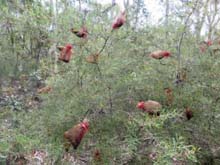 During the STEP walk at Agnes Banks Nature Reserve we came across an endangered Persoonia nutans with lots of little gauze bags tied over the flowers. This is a beautiful delicate plant but it occurs in limited locations. I happened to listen to an episode of ABC Radio National program Off Track that actually described what the bags are all about.
During the STEP walk at Agnes Banks Nature Reserve we came across an endangered Persoonia nutans with lots of little gauze bags tied over the flowers. This is a beautiful delicate plant but it occurs in limited locations. I happened to listen to an episode of ABC Radio National program Off Track that actually described what the bags are all about.
A major population of P. nutans is the one at Agnes Banks, though there are a few others, notably at Castlereagh Nature Reserve and the Georges River area. But all its localities are isolated and have been threatened by past land clearing, sand mining and development.
Currently researchers have difficulty propagating the plant and it has been impossible to germinate the seeds. Research is currently being undertaken by the Australian PlantBank in order to establish a viable emergency genetic supply of seeds. Ideally, if the plant could be propagated, it could be used in habitat restoration and landscaping.
In the radio program, Technical Officer Katharine Catelotti describes the work being done on this plant. Especially intriguing are the seed collection and germination experiments using smoke, heat, fungus and processing through the emu’s digestive tract. As emus are known to eat their scats so they are testing whether the seeds need to go through their system more than one time.
Battle to Preserve the Byles Creek Wildlife Corridor
Beecroft is bearing the brunt of three significant infrastructure developments (North West Rail Link, Epping to Thornleigh Third Track and NorthConnex road tunnel) as well as unit development. These projects have led to the removal of many significant trees including 0.7 hectares of Sydney Turpentine Ironbark Forest which is listed as endangered.
The residents of Malton Road and the Beecroft-Cheltenham Civic Trust have been fighting for many years to save bushland at 79–87 Malton Road from subdivision. If the subdivision application is approved the last remaining corridor of bushland along Byles Creek between Lane Cove National Park and Pennant Hills Park will be lost. It is one branch of Byles Creek that is largely unaffected by urban runoff and it is rare to find such pristine water in urban areas.
The land is in excellent condition, holding high biodiversity values as recognised by its inclusion on Hornsby Shire Council’s Biodiversity Map, with habitat supporting a range of threatened flora and fauna species including Leptospermum deanei, Genoplesium baueri, the grey-headed flying-fox, Powerful Owls and an endangered population of Gang-gang Cockatoos of ‘significant conservation value as it is the last known breeding population of the species in the Sydney metropolitan area’.
If the land is built on, the bushfire regulations will require most of the blocks to be cleared to create asset protection zones. It is unclear whether all six blocks could be built on in any case because of access and asset protection issues. So it could be that most of the area of bushland would be cleared for construction of only two or three houses.
At the June 2015 Hornsby Council meeting following extensive resident addresses and debate, councillors voted unanimously to make a full and comprehensive submission to the NSW Government to acquire this bushland as regional open space. Members of the Byles Creek Valley Union and Civic Trust members worked hard to compile a comprehensive submission to the NSW Government, to augment that prepared by council.
In December the deferred application was refused by council on the grounds that the ecological assessments provided by the applicant were inadequate. Precise confirmation is needed of the possible presence of two plant species: the vulnerable Leptospermum deanei and the endangered Genoplesium baueri, an orchid. It would not be known until March – when the orchid flowers – whether it grows on the site.
The applicant has not been prepared to obtain extra information about this orchid and the applicant then appealed the decision before the Land and Environment Court.
A report commissioned by council by ecological consultant Peter Smith stated the entire site:
… is worthy of purchase and management as a bushland reserve ...
If funding is not available to purchase the land, then further assessment is needed of the impact of the proposed subdivision and residential development of this land …
A patch of bushland like this, with so many large, old trees, forms a crucial piece of habitat for so much of our biodiversity and its loss would be a loss for the community and Sydney as a whole …
He also questioned whether offsets are available in respect of the land to be cleared.
On 10 March a conciliation conference was held on site. Over 100 local residents arrived on a very steamy morning to hear very detailed oral submissions from four local residents explaining their reasons for opposing the application.
Further negotiations are going on via the Land and Environment Court conciliation process. This is due to be finalised on 6 May.
The residents are still fighting with all their might. They are pushing for the proceeds from the council sale of a church hall in Cheltenham to go towards purchasing the land. See www.2119.org.au for the full story. The group has also created a Facebook page for Mikey the Powerful Owl that is frequently seen in the valley.
Please write to the Hornsby councillors to express support for acquiring the land so this precious bushland can be preserved.
Bushwalking Booms as Participation Nearly Doubles
Interesting consumer research has found the number of Australians going bushwalking has risen significantly in the past five years.
Findings from Roy Morgan research shows that between October 2010 and September 2015, the proportion of the population over the age of 14 who reported going bushwalking at least occasionally has almost doubled from 15.6% to 27.3% – a total of 5.3 million Australians. That is a lot of people.
The information was gleaned by a survey conducted by the reputable consumer research organisation, which asked respondents about how often they go bushwalking, and what they did on their last holiday.
Self-reported regular or occasional bushwalkers were shown to be more likely to visit wilderness locations, as well as undertake other outdoor adventures. I got in touch with researchers at Roy Morgan and they kindly provided state specific information that shows South Australia saw the greatest increase in bushwalkers over the period, while Tasmania has the highest rates of participation overall.
Most importantly, it seems the trend towards an increasing interest in bushwalking holds true across the country.
From personal experience, I’ve seen walks near my home in NSW increase in popularity in recent years, with one route in particular jumping from up to 15 walkers on a good Saturday to now closer to 80. There have also been some incredible increases in the number of people on a few specific walks in Royal National Park, but these are big outliers and unsustainable increases rather than the slow and steady growth we might hope for.
This growth is also visible online and in community groups that are closely affiliated with bushwalking. I’ve seen a clear increase in participation in recent years on bushwalk.com and wildwalks.com.
But this seems to be leading to more people presenting as under-prepared for the adventures they’re undertaking. I’ve come across more walkers without an adequate map or relevant details for the route they’re on. This is a worrying trend and I hope that as more experienced members of the bushwalking community we can assist beginners whenever and wherever they need the help. Equipping people new to walking should be a priority, not only for the health and safety of new bushwalkers, but also to try and minimise their impacts on the parks, tracks, flora and fauna they interact with.

What hikers/bushwalkers did on their last trip compared to the average Australian
(from Roy Morgan’s latest findings on the holiday habits of Australians)
Related Industries to Benefit
The overall result of this increase in bushwalking participation will have knock-on effects for the businesses that are closely related to the activity, especially for information services such as Wild.
Cafés and other businesses near walking tracks should also enjoy an increase in walkers, which would be a great win for the edge of suburbs. Hopefully the number of people enjoying a day walk will also graduate into multi-day hikes, and they’ll do so with the help of guides and tour operators. This is the good news Roy Morgan Research wants to communicate, with group account director, Angela Smith saying the apparent boom in bushwalking represents ‘a wonderful opportunity for savvy tourism operators and destination marketers’
‘Not surprisingly, destinations offering scenic wilderness hold greater appeal for hikers and bushwalkers than for the average Australian considering a holiday. When asked where they’d like to visit, this group showed an above-average preference for unspoiled regions such as Freycinet National Park, the Flinders Ranges, Cradle Mountain and Lord Howe Island,’ she said.
If this graduation process occurs then the adventure-specific retailers and clubs should also start to see a marked increase, but it may be too early to see these effects taking place. Also, given the popularity of online retail and community groups, the benefit to traditional organisations will no doubt be a little muted.
We need to be careful that we don’t love these special places to death. Hopefully the most significant change will be for parks and reserve management, otherwise the increase in participation will have adverse impacts on the environment. In NSW, we have seen some walks become over-the-top popular, going from just a few walkers per day to sometimes as many as 1000. Many of these bushwalkers are inexperienced and not aware of potential risks to themselves and the bush. This is not the norm, but show the impact social media can have in encouraging people to adventure, a lesson and warning.
Keeping Bushwalking on Track
Since we are now talking about nearly 30% of the population participating in bushwalking (more than golf, competitive sports, and cycling) it is time to start doing some solid research.
We need to better understand where people are walking, how they use the track networks, how often they return, walking speed, direction of travel, group sizes and so on. Much of this is easy data to collect and will help in better planning, equipping and promotion.
We can better understand how people are using walking tracks now, I am confident that we can plan for a future where even more people are walking, where we maintain a sense of wilderness and look after these precious areas. To do this we need to stop making assumptions and get some real data that can inform planning.
Unlike golf and cycling, the cost of entry to bushwalking is much lower for most popular short walking tracks. Gear suppliers have done a wonderful job at producing lightweight gear for experienced walkers. A challenge for the industry will be to find ways to provide products and services of interest to all these new bushwalkers, again the challenge would be made easier if we can better understand how, when and where these people are walking.
In the meantime, at least we know our national pastime is more popular than ever.
Our thanks to Matt McClelland for permission to republish this article. It was published in Wild on 17 February 2016.
Bushwalking Proposal for the Shoalhaven
A group of people living in the Shoalhaven region have seen the potential of the bushwalking boom.
The Shoalhaven region is an ideal area to promote bushwalking. There is a multitude of choices ranging from beach walking to coastal bushland with lovely lagoon views, and inland there are the spectacular Budawangs. Most of the walking possibilities are in national parks such as Morton, Murramarang and Meroo.
There are already many towns, caravan parks and camping areas which provide an extensive choice of accommodation. Strangely the area does not seem to be very well known so it is very quiet outside the warm weather holiday periods.
A proposal has been developed by the recently formed Shoalhaven Bushwalking Advisory Group which has a membership from right across the Shoalhaven and includes Shoalhaven Bushwalkers and Milton National Parks Association. The group represents a wide spectrum of interests including bushwalking, cycling, kayaking and bird watching. The group is united by a desire to protect and preserve the unique natural environment of the Shoalhaven while encouraging minimal impact recreational access to this remarkable area. Former STEP president, Barry Tomkinson is a member of the group.
This proposal outlines an opportunity to develop sustainable walking tourism, thereby promoting the beautiful natural environment as a year-round national and international iconic walks destination.
Walking tourism has the potential to extend the existing peak season and smooth the influx of visitors over the entire year. This has obvious advantages for infrastructure planning but also ensures that local businesses have more predictable revenue throughout the year, rather than the current boom and bust cycle.
Research demonstrates that for every $1 spent establishing and maintaining walking tourism facilities, as much as $600 is generated for the economy of the region.
However, significant evidence exists to indicate that visitor access to bushwalking and other minimal impact visitor experiences is constrained by a lack of readily available information and coordinated visitor support services, and poorly signed and maintained tracks and access points.
The group’s proposal is for a series of iconic walks to be developed and promoted to position Shoalhaven as a national and international walking destination.
The proposal will commence with work to brand, improve facilities and promote the Southern Shoalhaven Coast Walk, a 40 km walk from Narrawallee Inlet to Merry Beach. The project will act as a pilot for a new, collaborative approach to walking tourism development in the Shoalhaven.
Longwall Mining in Sydney’s Water Catchments
The battle continues against coal mining under the water catchments in the Illawarra but there are some hopeful signs that the NSW Government could start to see sense about the environmental damage that is occurring.
Sydney is fortunate to have a pristine water supply on its doorstep. In theory the water catchments are protected as development and agriculture are prohibited. In the Special Areas in the Illawarra catchment anyone entering the land without permission can be fined $44,000. These catchment areas contain bushland and natural systems such as coastal upland swamps that slow water movement and filter the water that flows into dams such as the Avon and Cataract. Many other cities have to pay millions of dollars to operate synthetic filtering systems of their water supply.
Mining has been undertaken in the Illawarra region since the 1880s but in the early days the methods used were pick and shovel and later machinery that took out small sections of the coal seam. The mine ceilings and walls were supported by the bord-and-pillar method. Since the 1960s the technology for longwall mining has been developed that vastly increases the rate of removal of coal and, incidentally, cuts the level of employment significantly.
The coal is removed by a massive machine that shears away the wall beside it whilst hydraulic powered supports hold up the roof. As the coal is removed, the machine supports are moved forward and the roof is collapsed behind them. The areas of rock extracted are 150 to 400 m wide, 4 m high and can extend for several kilometres. When one longwall is completed another is started leaving a rock support of about 50 m in between.
As such a large section of coal is removed the roof above the longwall collapses. Depending on the nature of the rock above, minor cracking can occur in the strata above, but frequently major cracking has occurred right up to the surface. Cracking leads to water leaking from the creeks and wetlands, pollution from the release of excess minerals from the underlying rocks and cliff falls.
Concerned locals have been documenting the damage over the past ten years and have been leading a campaign to raise awareness of the damage and making detailed submissions explaining the concerns about current and future development applications. This group was formalised by the creation of the Protect Sydney’s Water Alliance in 2013, a network of more than 50 community groups from across Sydney, the Illawarra, Southern Highlands and Blue Mountains.
Illawarra Mines
The Illawarra mines all produce coal for steel making. They make up a complex array of cavities under a region that has reliable rainfall and therefore is a significant source of drinking water for Sydney as well the large population of the Wollongong region. The main miners are:
- Wollongong Coal Ltd, listed on the ASX but majority owned by Indian company Jindal Steel and Power, with mines at Russell Vale near Cataract Dam and Wongawilli further south. The Russell Vale mine has run out of approvals. The Wongawilli mine was suspended but the company has now applied to extend its licence and reopen the mine.
- Illawarra Coal owned by South32, a company demerged from BHP that operates the Dendrobium mine near the Avon Dam.
- Peabody Energy operates the Metropolitan mine near the Woronora Dam.
There are two current controversial applications for extension of current mining operations.
Wollongong Coal
In Issue 180 of STEP Matters we wrote about the Planning Assessment Commission’s (PAC) report on the application to develop eight new longwalls. Wollongong Coal failed to convince PAC that it can expand the Russell Vale colliery without causing substantial and irreversible damage to Sydney’s drinking water supply.
As the mining approvals have run out the mine was closed six months ago, and the entire workforce was sacked. But the company seems undaunted and has continued with the expansion application.
The second review of the mine expansion by PAC has just been released and has reinforced the previous opinions. Despite acknowledging the short-term benefits of the project – which includes the provision of 300 jobs for five years, about $23 million in royalties to the NSW Government and $85 million in capital expenditure and other direct and indirect flow-on effects – PAC concluded that:
On the basis of the information provided, the Commission is of the view that the social and economic benefits of the project as currently proposed are most likely outweighed by the magnitude of impacts to the environment.
In particular, PAC identified the risk of water loss, risk to upland swamps, noise impacts on nearby residents, potential hydrogeological impacts and a loss of ecosystem functions.
PAC is not satisfied that the project is consistent with the State Environmental Planning Policy (Sydney Drinking Water Catchment) 2001 that it would have a neutral or beneficial effect on water quality in the catchment area. The magnitude of water loss is uncertain with the projected range from the proponent and Water NSW varying from minimal to 2.6 GL/year. PAC considers this is a high risk situation. Sydney Water has valued the potential water loss at a cost of $23 million over 25 years. The cost of government subsidies are also estimated to be $23 million. The expansion is economic as well as environmental madness.
A separate issue is the financial viability of the company itself.Wollongong Coal currently has no capacity to repay its debts unless it is thrown another financial lifeline by parent Jindal Steel & Power (Australia) Pty Ltd. The company is currently suspended from trading on the Australian Stock Exchange. If the project falls over the company has no capacity to remedy any damage it could cause to the catchment.
Under legislation passed in 2014 in response to ICAC findings the Minister for Resources can deny a mining application if the proponent is not deemed to be ‘fit and proper’. The Environmental Defenders Office has presented a strong portfolio of evidence that Wollongong Coal fails that test. The minister’s response is so far non-committal. This is the first time a decision is being made under this legislation so it may take a while to consider the precedent it may establish.
The final decision is in the hands of the government.
Dendrobium Mine
The Dendrobium Mine was approved in principle by a Planning Assessment Commission in 2001 and significantly expanded in 2012 despite great concern to those watching the significant damage that had already occurred to every swamp that was above an existing longwall.
The company is now applying for a further expansion closer to Avon Dam. Protect Sydney's Water Alliance objected to the expansion for several reasons:
- proven ongoing damage caused by current longwall mining
- failure by the proponent to take any steps to mitigate damage to swamps in previous longwalls
- failure by the proponent to prove that swamps can be rehabilitated or to undertake agreed research in this area
- the Dam Safety Committee clearly states in its submission that no longwall mining should take within 300 m of the full supply level of Avon Dam (the proposed longwalls will be within 250 m of the dam)
- the cumulative Impact of this mining on the catchments over the long term (as per PAC 2016 rejection of Russell Vale expansion)
- the dubious nature of jobs claims and the lack of any evidence that royalties or bond can ever cover the cost of rehabilitation
The closing date for submissions is 15 April. Click here to make a submission.
Metropolitan Mine
This mine was given approval for major expansion in 2009 despite major damage already occurring to the Waratah Rivulet and failed attempts to remediate the cracks using polyurethane resin injections. Peabody Energy is currently in financial straits because of the fall in the coal price. However, it is expected that the company will apply for a further expansion in the near future.
Significance of PACs Wollongong Coal Report
The issues raised in the PACs report apply to all the other mines in the catchment. It is hoped that heed will be taken of the strong opinions of the report when the current expansion plans of the Dendrobium and, possibly, future Wongawilli and Metropolitan mine expansion applications are considered.

Great Barrier Reef in Peril but Adani Mine Approved
At the end of March aerial surveys of more than 500 coral reefs from Cairns to Papua New Guinea revealed that the most pristine sections of the Great Barrier Reef are currently experiencing the worst, mass bleaching event in its history, with the overwhelming majority of reefs (95% has been quoted) being ranked in the most severe bleaching category.
Bleaching is caused by abnormally warm sea temperatures that have been boosted by the El Niño event that commenced in mid-2015 leading to sea surface temperatures more than 1°C above normal. These conditions are predicted to occur more frequently and more severely as greenhouse gas concentrations in the atmosphere increase.
As ocean temperatures have not cooled down yet in the northern section it is too early to tell what the long-term implications of this event will be. This depends on how soon ocean temperatures reduce and the time before another event occurs. Reefs need about ten years to recover.
The Great Barrier Reef has experienced mass coral bleaching events in the past. In 1998, there was a global mass bleaching event where 50% of the reefs on the Great Barrier Reef were affected. During this time, sea temperatures on the Great Barrier Reef were the highest ever recorded. Mass bleaching also occurred in 2002, with 60% of reefs were affected. This was the largest coral bleaching event on record.
In both the 1998 and 2002 events, the vast majority of corals on the reef survived, as sea temperatures came back down again in time for them to recover. About 5% of the Great Barrier Reef’s coral reefs experienced coral die-off in both these events.
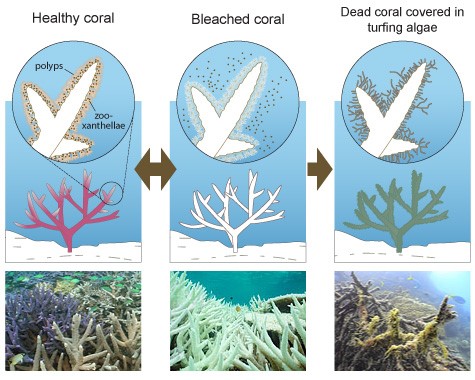 What is Coral Bleaching?
What is Coral Bleaching?
From www.globalcoralbleaching.org
Many types of coral have a special symbiotic relationship with a tiny marine algae (zooxanthellae) that live inside corals’ tissue and are very efficient food producers that provide up to 90% of the energy corals require to grow and reproduce.
Coral bleaching occurs when the relationship between the coral host and zooxanthellae, which give coral much of their colour, breaks down. Without the zooxanthellae, the tissue of the coral animal appears transparent and the coral’s bright white skeleton is revealed. Corals begin to starve once they bleach. While some corals are able to feed themselves, most corals struggle to survive without their zooxanthellae.
If conditions return to normal, corals can regain their zooxanthellae, return to their normal colour and survive. However, this stress is likely to cause decreased coral growth and reproduction, and increased susceptibility to disease. Bleached corals often die if the stress persists. Coral reefs that have high rates of coral death following bleaching can take many years or decades to recover.
Global Coral Bleaching
In 1998, a huge underwater heatwave killed 16% of the corals on reefs around the world. Triggered by the El Niño of that year, it was declared the first major global coral bleaching event. The second global bleaching event that struck was triggered by the El Niño of 2010. The US National Oceanic and Atmospheric Administration announced the third global bleaching event in October 2015 and it has already become the longest event recorded.
The new phenomenon of global coral bleaching events is caused by ocean warming (93% of climate change heat is absorbed by the ocean). Corals are unable to cope with today’s prolonged peaks in temperatures – they simply haven’t been able to adapt to the higher base temperatures of the ocean. Although reefs represent less than 0.1% of the world’s ocean floor, they help support approximately 25% of all marine species. As a result, the livelihoods of 500 million people and income worth over $30 billion are at stake.
What can be done?
A major global bleaching event is considered one of the most visual indicators of climate change. Clearly the current experience demonstrates the importance of taking action to reduce greenhouse emissions. Apart from the potential loss of thousands of jobs in the tourism sector future generations could miss out on experiencing this environmental masterpiece. In the face of this situation the announcement on 3 April by the Queensland Government of the go ahead for the development of the largest coal mine in Australia is hard to fathom.
Adani’s own figures are that the mine and the burning of the mined coal will emit more than 4,600 Mt CO2 over its 90 year lifetime. The Australia Institute has estimated that average annual CO2 emissions will be 79 Mt. Australia’s current annual emissions are around 600 Mt. Many conditions have been placed on the mine and port operation aimed at limiting direct environmental damage but nothing can be done to stop the long-term damage from burning the coal.
There is still some legal action being taken by the local Aboriginal land owners and the Australian Conservation Foundation is taking action based on Australia’s commitments under the world heritage convention, which dictates Australia ‘do all it can to the utmost of its resources to identify, conserve, present and transmit to future generations the outstanding universal value of the Great Barrier Reef world heritage area’ – and that this must be the primary purpose of management of the area.
It says Environment Minister Greg Hunt ‘made an error of law’ by characterising emissions from transport by rail, shipping and then the burning of the Adani coal overseas as ‘not a direct consequence of the proposed action’.
The other hope for stopping the mine is that the falling price of coal will risk the financial viability of the coalmine so that bank finance will be unavailable. Dredging of the port at Abbot Point cannot commence until finance is secured.
Will Driverless Cars be Good for the Environment?
Technological developments have had profound impacts on our lives, some good and some not so good, some with immediate benefits but unforeseen damage in the longer term. The internal combustion engine has transformed our lives from the horse and buggy era to almost total dependence on the use of motor cars.
Motor cars dominate our land use because of the need for roads, parking, service stations, car retailers etc. There is the health cost of fossil fuel particulate emissions and transport is a major contributor to greenhouse gas emissions. There are pollution and social costs from the inefficiencies and stress caused by congestion.
There is currently some debate about the effects of driverless (autonomous) cars. I will leave discussion of the economic effects such as changes in employment to the experts. Here are a few of the arguments for and against driverless cars from the social and environmental point of view. I am interested in hearing your views.
Reduction in Congestion
One of the chief arguments in favour of driverless cars is that they will lead to more efficient use of roads. Driverless cars could communicate with each other and traffic management systems and permit greater numbers of cars to get through a particular stretch of road. This is hypothetical in that it hasn’t been proven with real-world traffic and real driverless cars yet, but it has been well modelled, and there is little reason to doubt that in general this is true.
Driverless cars, it is believed, won’t get in accidents with anything like the frequency or severity of human-driven cars. This will reduce overall congestion, as well as death and injury, personal and financial costs.
Vehicle Efficiency
It is believed that most urban driverless taxis, and perhaps private cars, will be fully electric for reasons that are not primarily environmental.
Electric motors offer safety advantages (they can be used for emergency braking and to some degree for emergency steering). They are also much more durable (an electric motor easily lasts 1 million kilometres), less expensive and less complex than conventional engines. (Currently the reason for the high cost of electric cars is the expense of batteries.) In addition some driverless taxis operating in local traffic, primarily during peak hours, will not need huge battery packs. During idle times they can drive themselves to the next high efficiency charging station as needed.
There can be no doubt that driverless taxis and buses can change the nature of urban mobility. Much more short-distance travel will occur in small, lightweight, extremely energy efficient driverless taxis. Although this may lead to an increase in total miles travelled, the following effects combine to reduce greenhouse gas emissions because driverless taxis will:
- be mostly electric which reduces carbon emissions (provided the electricity comes from renewable sources)
- be smaller and much lighter than the average car which further reduces energy consumption per kilometre
- reduce demand for private cars and the total number of cars and therefore reduce the sizable greenhouse gas emissions during vehicle manufacturing which are typically more than 10% of total life-cycle emissions of a car (according to some estimates, a self-driving car-sharing vehicle or taxi can eliminate seven to ten private cars)
- facilitate multi-modal travel (taking a taxi to the train or bus station, continuing with bus or train)
More Efficient Use of Cars
How will driverless cars change the way we get around? The future may not be in private ownership but in mini-buses and taxis. The response of individuals is hard to predict.
Already there is a trend for people living in inner city areas where there is good public transport to forgo private car ownership. Car sharing services such as GoGet and internet call up services such as Uber are available to meet short-term needs.
Carpooling has been touted for decades as a way to use cars more efficiently. But it never took off because it suffered from an information problem: There was no way to know whether someone living around the corner was heading in the same direction as you, right this instant. It is much easier to drive yourself so many of us head off to work in the same direction with one or two people on board.
At the level of urban design and the environment, driverless cars could produce huge benefits. If cars can drive themselves, fleets of them could scurry around picking people up and dropping them off, working with sleek, robotic efficiency. With perfect computerised knowledge of where potential riders were, they could pick up several people heading the same way, optimising ride-sharing on the fly.
It’s possible that fleets of robocars could become so reliable that many people would choose not to own cars. The reduction in private use of cars could reduce the need for parking. Think of all that land that could be freed up and converted to recreation and green space.
Social Benefits
Driverless cars could enhance the lives of the disabled and older drivers by giving them greater independence although they may still need assistance at either end of their journey.
Questions
The effect of driverless taxis on public transport is not yet clear. There is both the risk that some local trips which are taken by public bus today will migrate to driverless taxis and the opportunity to capture a much larger share of the mobility demands with on-demand buses and mini-buses will not eventuate.
There has been talk of the nirvana of being able to call up your driverless car and, hey presto, your car will appear and take you to work or the shops, take your children to sport or pick them up from the late night party. You will be able to sit in the car and catch up with the work emails or have a snooze. Internet taxis and ride share services cost less because they are more efficient in matching up vehicles and passengers. Costs will become even less if there is no driver to pay. Transport to work will be so enjoyable that people will happily live in the outer suburbs and travel times will not be an inconvenience.
But, just a minute, if one extra person is driven rather than taking public transport won’t lots of people want to do this? Congestion is a non-linear function, so as a road approaches its maximum capacity, small changes in traffic volumes can cause proportionately larger changes in congestion delays. We see this in practice where reduced traffic during school holidays makes a major difference to travelling speeds.
Driverless cars somewhat mitigate this effect, but that doesn’t matter if the use of driverless cars means more cars on the road at the same time. Further, ride shares have to drive further than someone in a private car would in order to pick up their customers or return to their designated drop off points. Completely empty driverless cars on the road are not likely to reduce congestion if more driving is required.
And that’s where the rub is with driverless cars. There are differences of opinion about how driverless cars will actually operate.
Will people stay attached to private cars?
Many people like having cars and use them as handy storage and goods movement facilities. Will they be willing to give up the convenience of having a car immediately on hand? They are status signifiers to neighbours. They are places of privacy. They are cars whose sunk costs are turned into travel conveniences, with weekend trips to the beach and annual holiday trips made economical by having a car for commuting.
While many automotive theorists predict radical changes in human behaviour related to car ownership, there’s little reason to believe that people will become rational just because of a new technology. There may be an impact on private vehicle ownership, but this may not be nearly as big as other advocates suggest. And if this is the case, then there is little reason to expect a reduction in total car miles driven and car ownership.
Will a reduction in family cars increase total mileage driven?
While in general there is little reason to believe that there will be substantial decreases in ownership, let’s explore that model in case it comes true. Let’s identify a model family of mother who works in the city, father who does piece work at home and two children in school. In this model, the family’s single driverless car delivers the mother to work, then swings back and takes the kids to school, then swings back and takes the father to a mid-day yoga class, then unspools this at the end of the day. This does take a two family down to a one car family. Except it does it by up to doubling the total miles driven by the family, as the car goes two ways. Once again, congestion is strongly correlated to total miles driven by cars, and in this model an empty car is driving around with no one in it a lot of the time and the total miles driven by the family vehicle go up. That is likely to increase congestion.
Will parking outside the city centre increase the total distances driven?
Right now people who drive to work park at or very close to work. That’s pretty useful because they have access to their vehicle and it stops driving once they reach their destination. Under one model posited for driverless cars, the car wanders away to cheap parking outside of the core. The problem with this is that it once again puts more vehicle miles on the car which is strongly correlated to increased overall congestion. Imagine a bunch of empty cars on the roads at rush hour trying to get through city streets to cheap parking. And then there is the land required to be allocated for more parking space.
Will longer commutes become viable and so increase the total distance driven?
At present, commuting by car is highly unproductive time. Commuting by public transport is also problematic due to lack of power outlets and Wi-Fi and the inability to have private conversations. There’s a model of the future, however, in which driverless cars provide a private productivity zone, allowing people to live even further from work. Driverless cars promoting suburban living and long commutes increases traffic congestion and fuel use.
Conclusion
Driverless cars have the potential to reduce transport land use, congestion and greenhouse emissions. Do you agree?
References
http://cleantechnica.com/2016/01/17/autonomous-cars-likely-increase-congestion
http://www.driverless-future.com
http://www.newsweek.com/driverless-cars-and-future-parking-418943
http://www.newsweek.com/2016/01/22/driverless-cars-and-future-getting-around-415405.html
Issues of Major Concern for NSW
The population of the Sydney metropolitan area is estimated to grow by 1.6 million people by 2031. According to the NSW Government, Sydney will need 664,000 additional dwellings by 2031. This dramatic expansion is being driven by the Australian Government’s insane promotion of high immigration in pursuit of its unsustainable growth agenda. The NSW Government’s response is A Plan for Growing Sydney.
Biodiversity Laws to be Rewritten
In STEP Matters, Issue 183, p4 (Concern about Changes to Biodiversity Laws) we explained the reasons for concerns about the NSW Government’s plans to rewrite the biodiversity laws. The new legislation is due to be released in March 2016 and the indications are that protections will be significantly weakened.
Expansion of Medium Density Housing
In the past, councils expended significant funds in formulating local environment plans with zoning locations appropriate for different areas. The particular zoning and its extent took into account the immediate and cumulative effects on local infrastructure, services, traffic, street car parking, social services and amenities. The matching development control plans gave consideration to the local character of the area, including streetscape, topography, shared views, and soils.
It now seems that the NSW Government is trying to overwrite these local powers by proposing a major expansion of medium density housing into low density housing areas. Details are provided in a discussion paper released in November 2015 called Options for Low Rise Medium Density Housing as Complying Development.
Forced Council Amalgamations
After promising that amalgamation would not be forced onto residents, the NSW Government is pressing ahead by moving the goal posts. Initially local councils needed to demonstrate to IPART that they were fit for the future. Then after the majority of councils did prove their financial fitness the Government imposed a minimum scale and capacity (population size) as the requirement.
Climate Change Implications for Local Bushland
The Ku-ring-gai Bushcare Association is an unincorporated organisation that is supported by Ku-ring-gai Council which supports the Bushcare volunteer program and holds regular educational events. The committee comprises elected volunteers and Council employees.
Paris Climate Change Agreement
The Paris climate change talks in December 2015 produced an agreement hailed as 'historic, durable and ambitious'. Developed and developing countries alike are required to limit their emissions to achieve an objective of limiting average global temperature increases to 2°C with an aspiration of 1.5°C.
Hornsby Quarry Diatreme
In November last year STEP held a talk by Dr Ian Percival on the unique volcanic diatreme that has been exposed in the Hornsby Quarry. The Geological Society of Australia and STEP made submissions to the Roads and Maritime Services about the project to use the quarry void to dispose of spoil from the NorthConnex tunnel. But while it appears that the upper two levels of the quarry will escape burial, so far we have seen little reference in any document to the enormous importance of this site as a scientific and educational tool.
Prickly but Friendly Close Encounter
STEP committee member, Andrew Little, happened across an Echidna searching for ants in a driveway in Roseville Chase. It was a concern that he had open shoes without socks at the time and so stood perfectly still. He describes the experience.
We can Achieve Sustainability – but not without Limiting Growth
Mark Diesendorf, UNSW Australia
Can Australians be sustainable and enjoy endless economic growth? It’s not likely.
Beverage Container Deposit Legislation
The Boomerang Alliance, a coalition of groups led by the Total Environment Centre, has been campaigning for more than ten years for the introduction of a drink container deposit scheme to reduce the appalling level of litter, especially along our waterways and highways.
Hard Times for Flying-foxes in Sydney
Out thanks to the Ku-ring-gai Bat Conservation Society for permission to publish this article that was originally published in Friends of Bats newsletter in December 2015. It is written by Tim Pearson, a wildlife ecologist who is researching flying-fox communication for his PhD at Macquarie University.
Late Spring in the Snowies
Two members of the STEP committee visited the Snowy Mountains in recent months. John Martyn saw plenty of flowers in late-spring but my experience in mid-January was that most of the flowering had finished. Traditionally January and February have been peak season for flowers. More evidence of climate change? John’s perspective on his visit follows.
Hibbertia Turramurra Listed as Critically Endangered
About a year ago the discovery of a new species of Hibbertia in was announced. The species, with the scientific name Hibbertia sp Turramurra and common name of Julian’s Hibbertia, was officially listed as critically endangered under the Threatened Species Act in September.
Vale Glenn Johnson
Sadly another STEP stalwart has died. Glenn Johnson was a member of the committee for nine years from 1984 to 1992. His fellow committee members describe Glenn as a sensitive person who loved the natural environment and who was passionate about his family, garden and work with the Royal Botanic Garden Sydney. He was a born teacher and explainer.
Young Scientist Award 2015
The Science Teachers’ Association of NSW conducts a program to assist students and their teachers to carry out scientific investigations. Since 1992 an annual award program has provided prizes for the outstanding projects. STEP sponsors an award for a project relating to an environmental issue.
Heaven for Native Orchids in Wahroonga Estate
Wander through the bushland of Wahroonga Estate and you will see the delicate heads of native orchids peeping out from between Sarsparilla (Smilax glyciphylla) and Old Man’s Beard (Clematis aristata). The first indications that orchid flowers are about to emerge are the tiny leaves – heart-shaped, ovular, arrow-headed – solitary leaves of a variety of shapes that carpet the ground.
Ever-changing Birds of Northern Sydney
Ross Rapmund gave a fascinating talk on the changing birds in northern Sydney. He started with a slide which compared the ten most common birds before 1900 with recent data. A hundred years ago the most common species were small birds with an average weight of 18 g (e.g. Superb Fairy Wren, New Holland Honeyeater, Golden Whistler and Willie Wagtail). Now the most common birds are much bigger with an average weight of 180 g (e.g. Common Myna, Noisy Miner, Magpie, Currawong and Rainbow Lorikeet).
Concern about Changes to Biodiversity Laws
The NSW Government is currently considering legislation to implement the recommendations of the Independent Biodiversity Legislation Review Panel contained in their report released in December 2014.
Proposed Bushland Destruction in Frenchs Forest
This article by Connie Harris was originally published in the October edition of Native Plants for NSW. It concerns the massive expansion of roads proposed in the vicinity of the Northern Beaches Hospital development. See more detail at http://www.rms.nsw.gov.au/projects/sydney-north/northern-beaches-hospital/index.html. It is of great concern to us all that these new roads will greatly encourage car dependence and inevitable congestion, at great cost to wildlife habitat.
United Nation’s Population Projections
Silly me; I thought world population now around 7 billion was going to stabilise at around 9 billion by 2050.
Not so according to the latest medium-variant projection by the United Nations [1]. What they predict is that Africa’s population will continue to grow so that by century end the population will be nearly four times what it is now.
Well might you say that that would be impossible, the continent struggles to feed itself now. How could it possibly accommodate so many people? [2]

Population (in millions) according to the medium-variant projection
A famous population pessimist writing around 1800 was the Reverend Thomas Malthus. He got it wrong because he didn’t foresee the opening up of the New World and the dramatic reduction in transportation costs among other things. Nevertheless his basic thesis was right; population tends to grow faster than food production.
Of interest is that the population of Europe is expected to fall by 2050, continuing on to 2100. Asia falls after 2050.
It’s important that we look at this in terms of annual percentage changes. The table below is based on the above but with the first column showing the rate of change since 2000.

These numbers might look low but please remember that 2% pa means near 25% overall over 10 years. The African 1.1% over 50 years means a growth of 77%.
The countries with the highest rates of growth from 2000 to 2015 are (% pa):

And those with the lowest are:

Australia’s was 1.5% pa. This has been the subject of much debate. Do you remember Kevin Rudd’s famous Big Australia statement?
STEP has contributed to the debate and has published a position paper on this subject.
The countries with populations of at least 100 million in 2015 are:

Some near 100 million with high growth rates are Ethiopia (99.4 million), Egypt (91.5 million) and Vietnam (93.4 million). Joining all of these by 2100 will be (current population shown):

All these are in Africa except Iraq. Please don’t ask what the populations are likely to be in 2100, it’s too depressing, but to give you a teaser, Congo will be 389 million and Zambia 105 million.
To reflect on the issue of Africa, Rwanda’s population in 2100 is expected to be
25.7 million or 975 people per sq km. This is a country that has a very high proportion of the population dependent on subsistence agriculture. Ku-ring-gai’s density is not much above this at 1,278 people per sq km.
Japan will drop off the list.
One wonders just how accurate current counts are. Advanced countries use censuses where each household must complete a form every five or ten years.
What happens in third world countries with many villages often difficult to access and with literacy issues; think New Guinea? Presumably there is a lot of estimation.
The following table provides much available detail for selected countries. The first one is Australia. We should be familiar with our own country.

The next two are our near neighbours to the north. Neither has been a source of migration pressure on Australia. Indonesia has an enormous population; Papua New Guinea’s has grown rapidly.
China is extremely important. On 29 October China announced a further relaxation of its one child policy, it will now be a two child policy. China has been a major source of migrants to Australia and that is likely to continue.
Uganda is included as a representative African country. One was tempted to say typical but there is enormous variation across the continent. Russia is interesting because of projected population falls.
The first observation is to reflect on just how small Australia’s population is compared to the other countries. As of 2015 it is less than 10% of Indonesia’s and less than 2% of China’s.
The next part of the table shows annual percentage change, firstly for 2000–15, and then for the remainder of the century. The latter is very much an average so also shown is the end position, i.e. the change in the last year of the century.
Australia grew at 1.5% to 2015 but by 2099–2100 this will be down to 0.3%. Is this believable?
All the other countries in the list will also have much lower rates of population growth by then, except Russia which is already in decline. This is caused by birth rates being less than death rates and net migration.
To maintain population, births per woman, needs to be above two. It’s not now in Australia which is what gave rise to Peter Costello’s baby bonus.
Look at the frightening figure for Uganda for 2010–15 – nearly six. The rate for China is expected to increase.
Life expectancy is high for Australia and is expected to increase, as will be the case for all the other countries shown. The Russian figures are low for what is essentially a European country.
This increase will be accompanied by significant increases in the aged population; in Australia’s case the 80+ rises from 4% of the total now to 14% in 2100. Hopefully there will be improvements in medicine, in particular a treatment for dementia, so that people in this age bracket will have some quality of life.
[1] World Population Prospects: Key Findings and Advance Tables (2015 revision) Working Paper ESA/P/WP.241, United Nations, Department of Economic and Social Affairs, Population Division
[2] Why has Africa become a Net Food Importer?
STEP member, Jim Wells, has provided this article on the outlook for future world population numbers.
Rapid Population Growth – Witches Hats Claim another Casualty
Media Release 17 September 2015, The Hon Kelvin Thomson, Federal Member for Wills.
A Greater Sydney Commission?
Last year the NSW Government’s planning legislation was rejected because communities were going to be left out of significant parts of the decision making process. This last week the government announced the structure of the Greater Sydney Commission that could be just as bad.
Unique Geology Ignored in Hornsby EIS
The Environmental Impact Statement on Hornsby Quarry was released in August with a closing date for submissions of 4 September 2015. STEP and the Geological Heritage Subcommittee of the NSW Division of the Geological Society of Australia have some concerns.
Changes made to 10/50 Legislation but Basic Problems Remain
The report on the review of the 10/50 Vegetation Clearing Code of Practice was released in August. The NSW Government is implementing all 30 recommendations of the review. However the fundamental problem with the legislation remains. Residents of urban areas that are defined as bushfire prone land can chop down trees within 10 m of their house or attached structure without obtaining expert advice on whether this will reduce bushfire risk. This is the reason over 95% of the 3579 submissions received called for repeal of the legislation.
Will there be a Ban on Plastic Bags?
The issue of waste and litter from single use plastic bags handed out by supermarkets and other stores has been discussed for many years. For example a detailed research paper was produced by the NSW Parliamentary Library Research Service back in May 2004. This paper recommended that these plastic bags be phased out within five years.
What Plastic is doing to Marine Life
The impact on marine life from plastic may be most obvious in coastal regions, but in August CSIRO released the results of the first analysis of the threat posed by plastic pollution to pelagic bird species worldwide. The report is published by the National Academy of Sciences of the US.
Time for the 'Green Tape' Debate to Mature: Jobs and the Environment are not Implacable Foes
Allan Dale Professor in Tropical Regional Development, The Cairns Institute James Cook Universiity. Originally published on The Conversation. Read the original article.
Abbott Government's Vendetta against the Environment Continues
The Australian Government is reviewing the tax deductibility status of donations to environment organisations and is in the process of handing over to the states most powers for decision making in matters of national environmental significance under the Environment Protection and Biodiversity Conservation Act.
It's like Shazam for Plants
Ever heard of Shazam? It’s an app that tells you the name of that song you just can’t remember. Well now there’s promise of an app to identify plants.
Restoration of an Environmental Jewel
This article has been written by Frances O’Brien, Group Administrator at Wahroonga Waterways Landcare. The site is part of SAN Wahroonga Estate redevelopment that was approved in 2010 after three years of consultation.
Research Suggests Nature Walks are Good for your Brain
From Washington Post 29 June 2015
New Walking Map for Berowra Valley National Park
A new high quality walking map of the Berowra Valley has been published by Friends of Berowra Valley.
Discovery Centre Opened at the Sydney Institute of Marine Science
The Sydney Institute of Marine Science, located in a historic sandstone quarry on the Chowder Bay foreshore, has opened a new Discovery Centre.
Closure of Unauthorised Mountain Bike Track in St Ives
Ku-ring-gai Council has received considerable flak over a decision to close an unauthorised mountain bike track down a steep hill below the tennis courts near Warrimoo Oval, St Ives.
Possible Lighting of Canoon Road Netball Courts
Issue 178 (p2) of STEP Matters outlined the content of a preliminary draft plan of management for the Canoon Road netball complex in South Turramurra. Night lighting is now on the agenda.
St Ives Showground and Precinct Lands
In early 2015, Ku-ring-gai Council invited submissions on a draft plan of management for St Ives Showground and Precinct Lands. On 26 May 2015 the plan was adopted.
One area of concern to STEP was the Mini Wheels Training Club's use of a site containing an endangered Duffy's Forest ecological community. A consultant's report concluded that the club's use of the site could not be managed sustainably and was also damaging the coastal upland swamp down the slope below the site.
Council resolved not to renew their lease (due to expire in March 2016) and to prepare a report on biodiversity offset funding options to rehabilitate the site.
State Government Ignored Expert Advice on 10/50 Bushfire Clearing Legislation
Freedom of Information (FOI) requests made by the Stop the Chop alliance have revealed that the NSW Government ignored expert advice when deciding to enact the 10/50 Vegetation Clearing Code of Practice. What were they thinking? Their attempt to make easy political capital out of the Blue Mountains bushfires in September 2013 has backfired. This misguided legislation is causing irreparable damage from the cutting down of thousands of trees for reasons other than bushfire protection.
Tour of Biobanking Site in Hornsby
This information came from an article written by Margery Street for Blandfordia, the newsletter of the North Shore Group of the Australian Plants Society.
NSW Offsets Policy: A Dubious Way to Prevent Loss of Biodiversity
The efficacy of offsets depends on a strict set of rules and long-term consistency of application. The first article ponders whether offsetting will cost our natural heritage (koalas or coal, nature or one-off profits, short-term gain or things of wonder for our grandkids) whilst the second article provides an overview of the desirable guidelines for the creation and operation of offsets.
Can Direct Action meet Australia's Greenhouse Gas Emissions Target?
Under the United Nation's climate change agreement Australia’s current greenhouse gas emissions reduction task is to reduce its emissions by 5% below 2000 levels by 2020.
Concrete Coastlines: It's Time to Tackle our Marine Urban Sprawl
This article was originally published on The Conversation. Read the original article.
More...
Clean Up Australia Day: No Let-up in Rubbish from Vehicles
Participants in Clean Up Australia Day once again noticed the massive extent of littering and rubbish dumping from vehicles. The Comenarra Parkway is a prime example.
Wrap-up of NSW State Election
The NSW Government election demonstrated the high level of concern about coal mining and coal seam gas. Several seats affected by mining and coal seam gas had strong swings away from the Liberals and National Party. Ballina, Wyong and Campbelltown were lost to the Greens or Labor.
Vital Byles Creek Wildlife Corridor under Threat from Development
The residents of Malton Road and the Beecroft Cheltenham Civic Trust have been working for many months to try and save some 2 hectares of privately owned land in Malton Road, Beecroft from subdivision and residential development.
A Memorial for Neroli Lock
Several past and present members of the STEP committee were delighted to be invited to a function at Ingleside on 19 April 2015 to celebrate the unveiling of a memorial to the life of Neroli Lock (see STEP Matters 178, p7).

